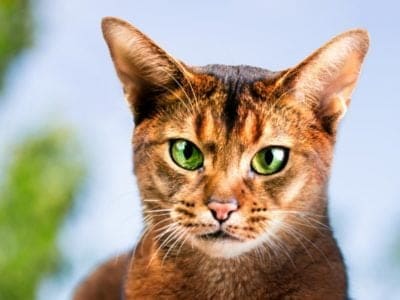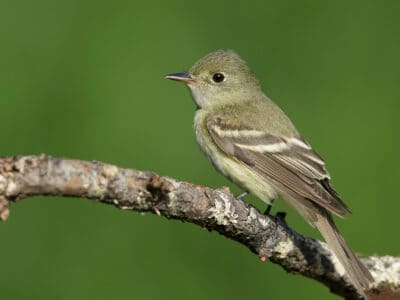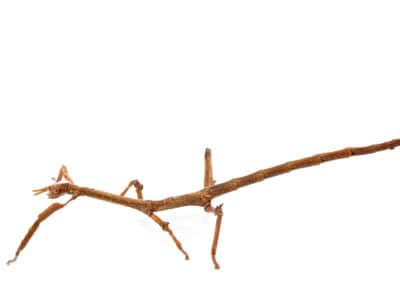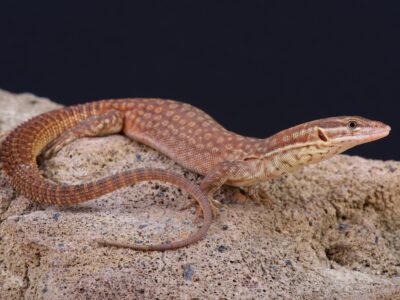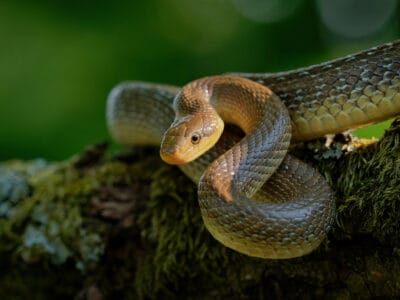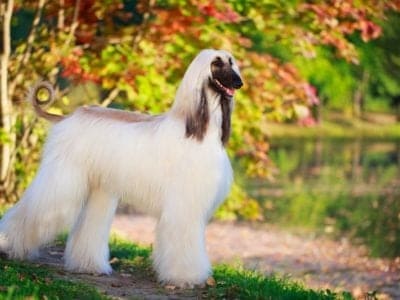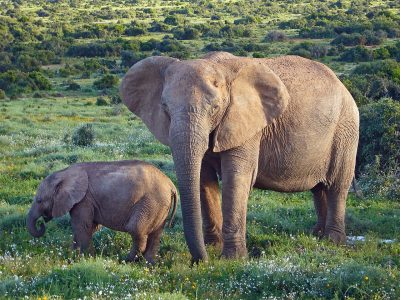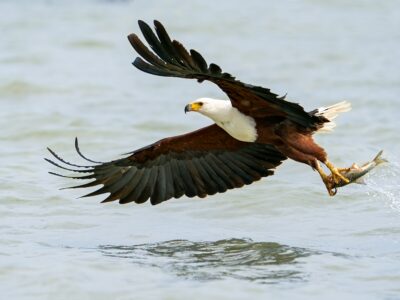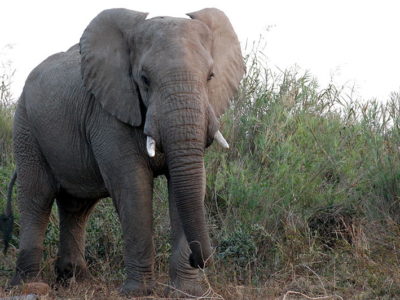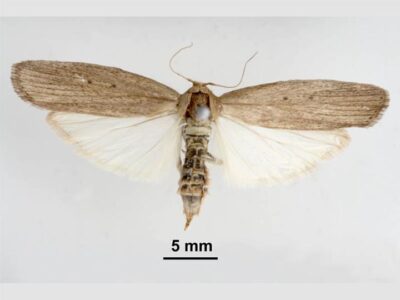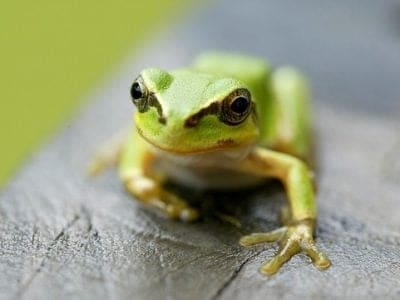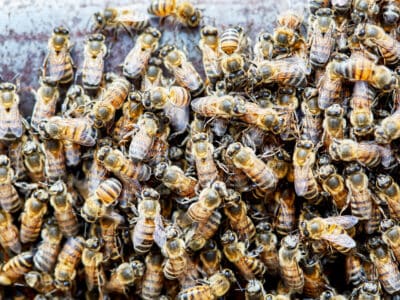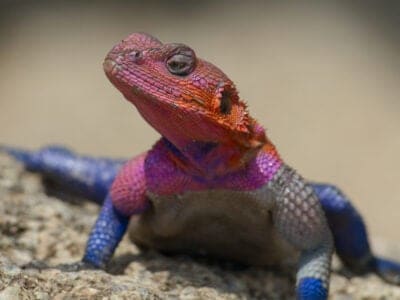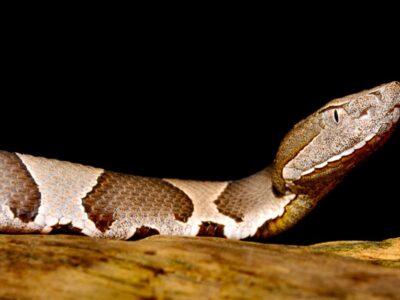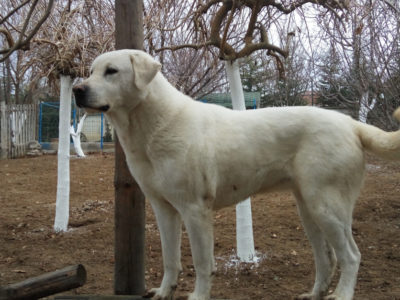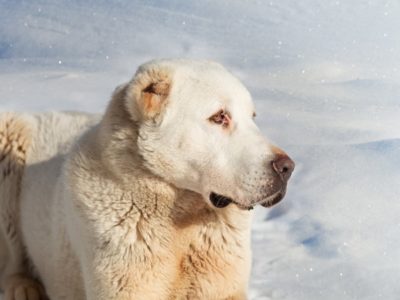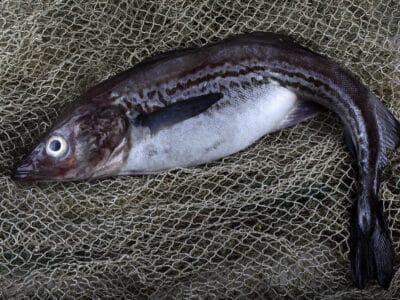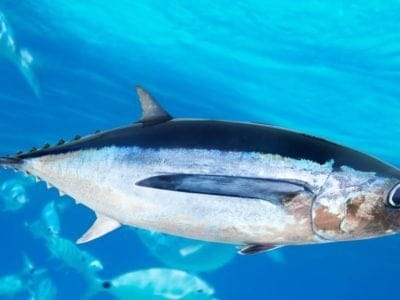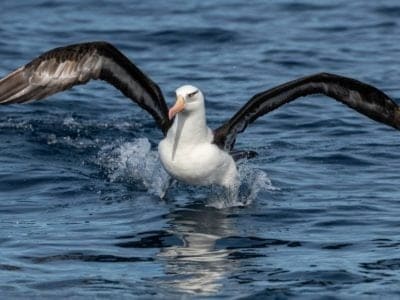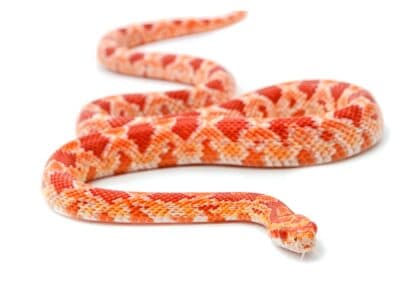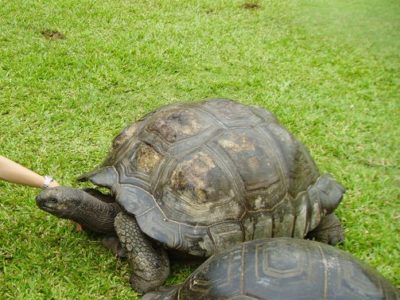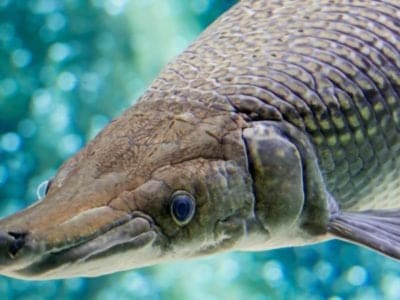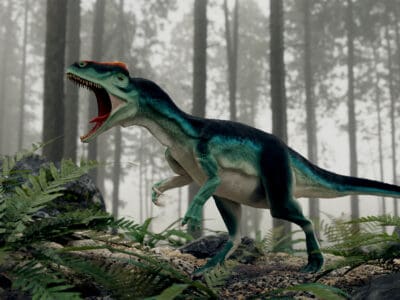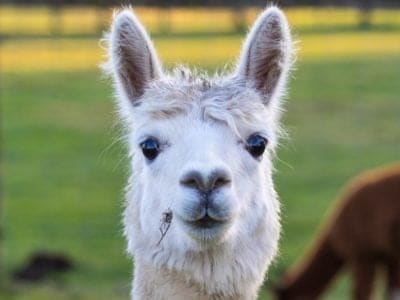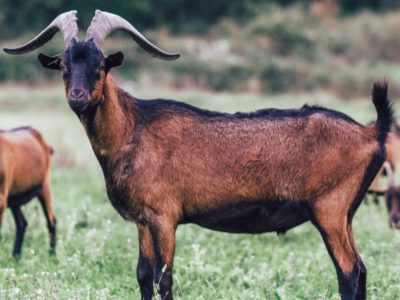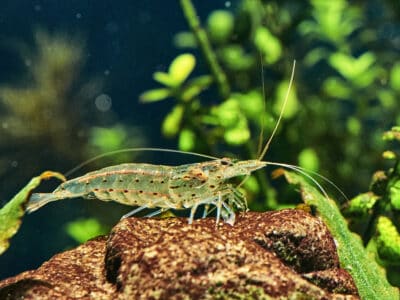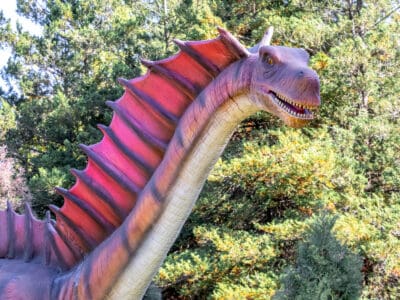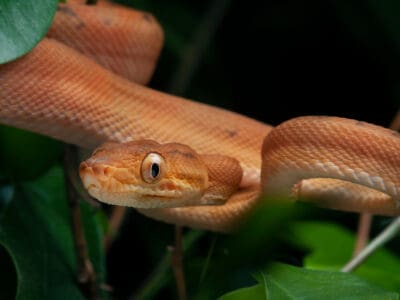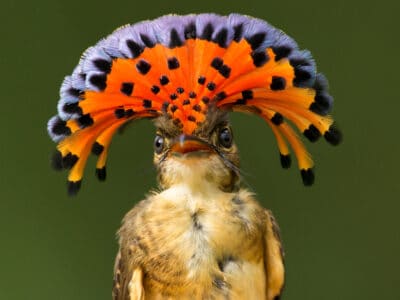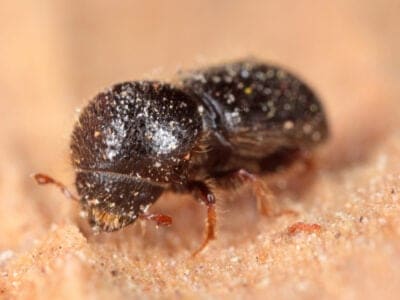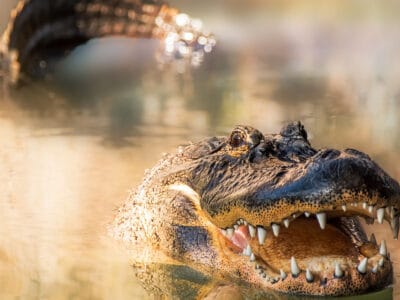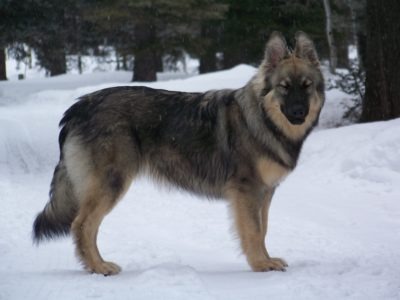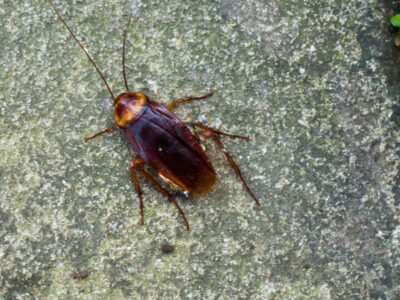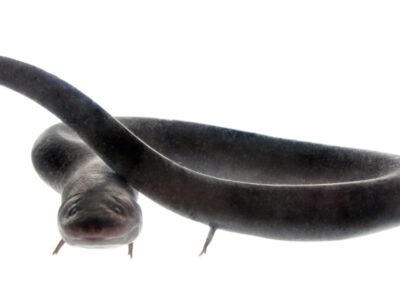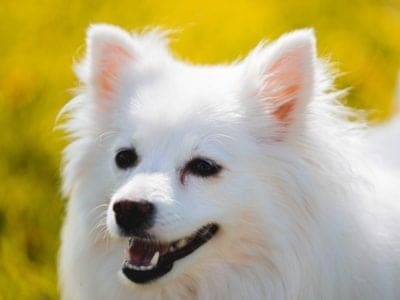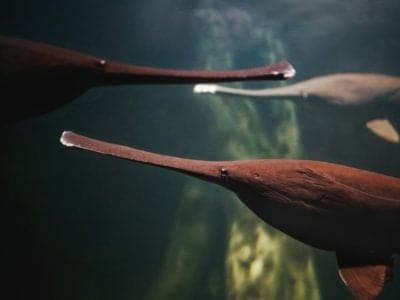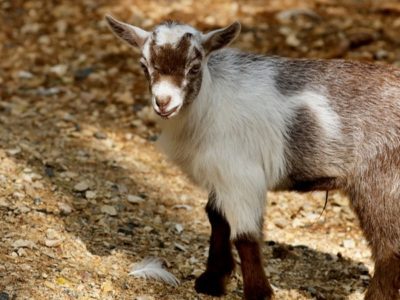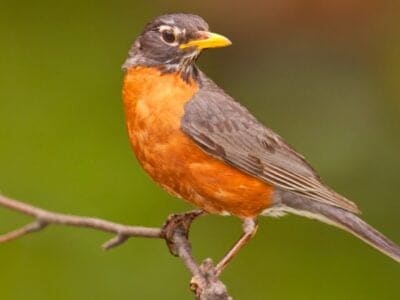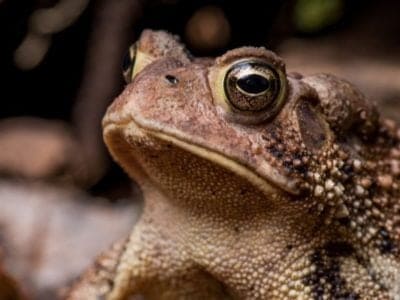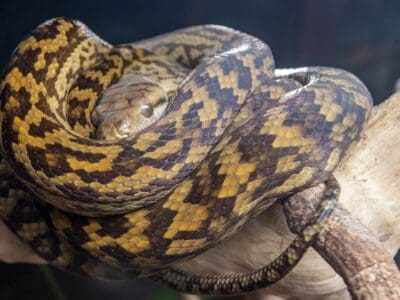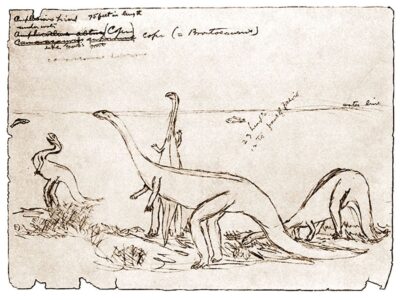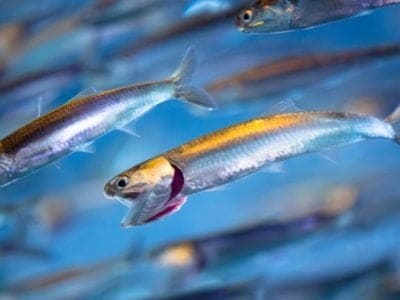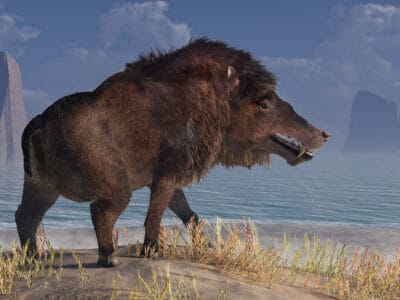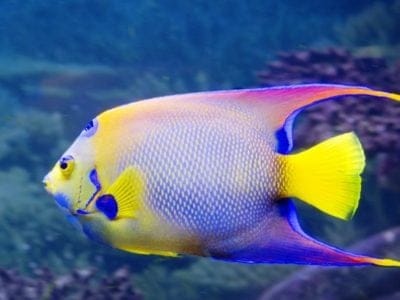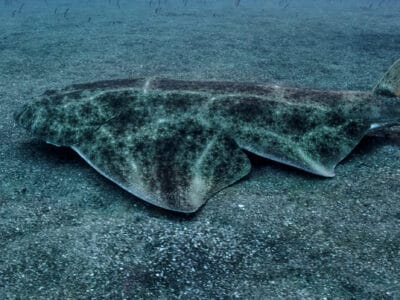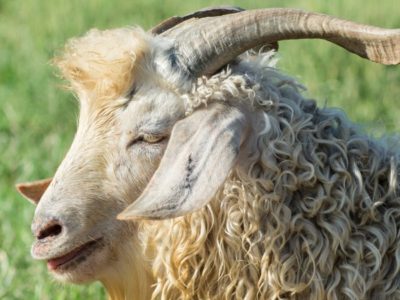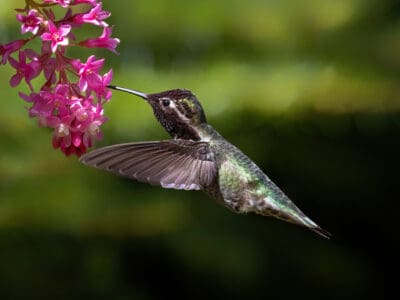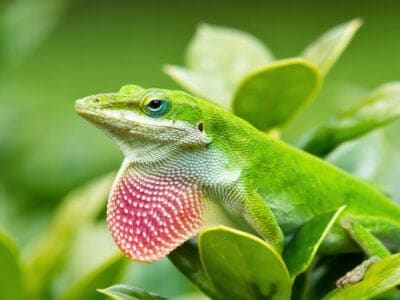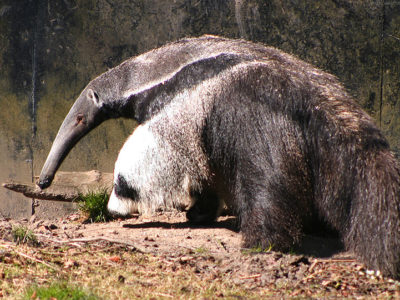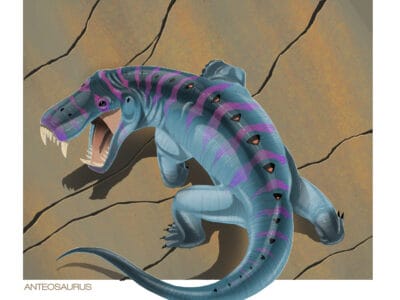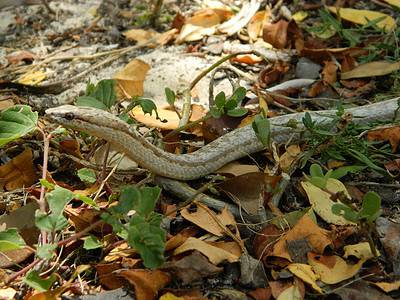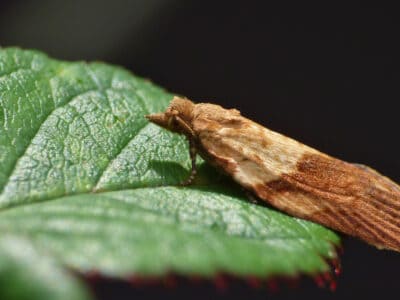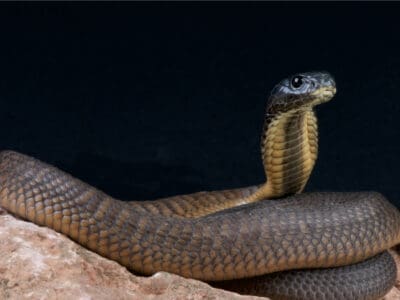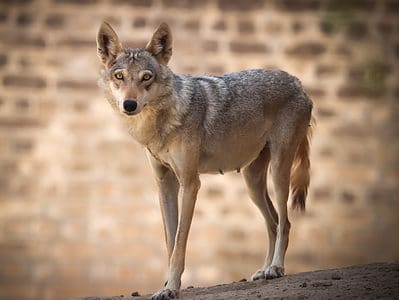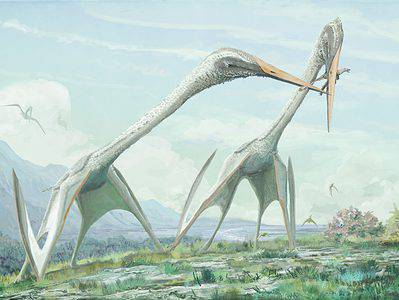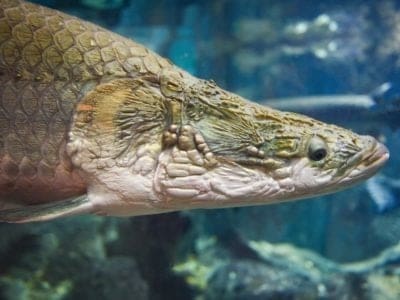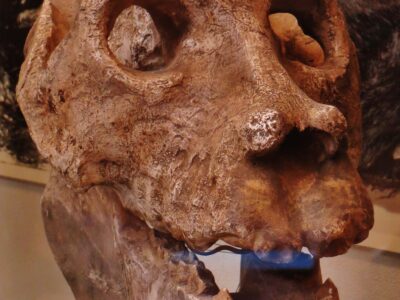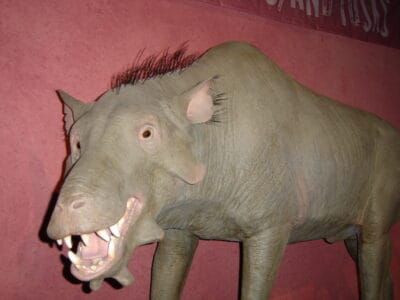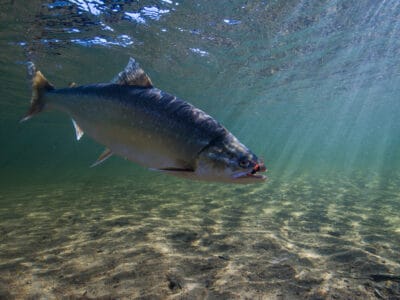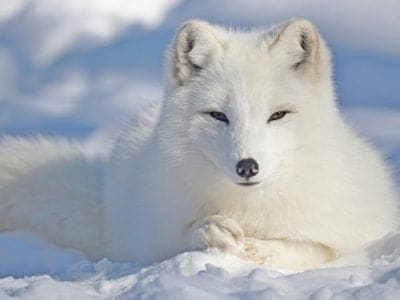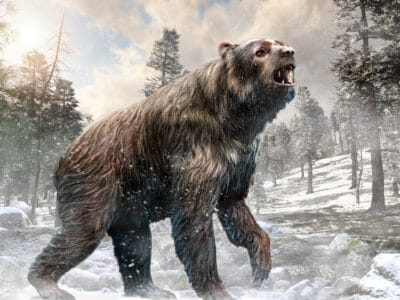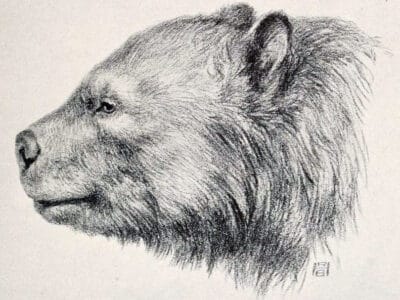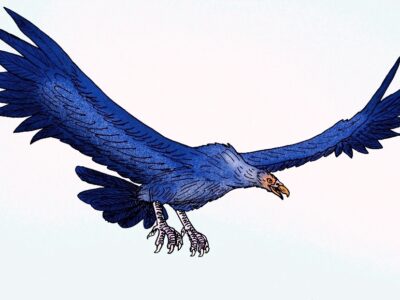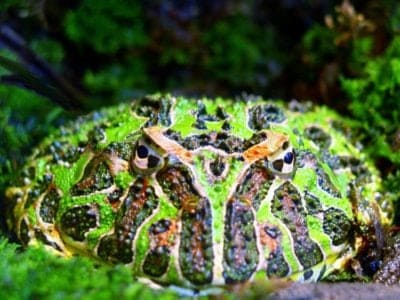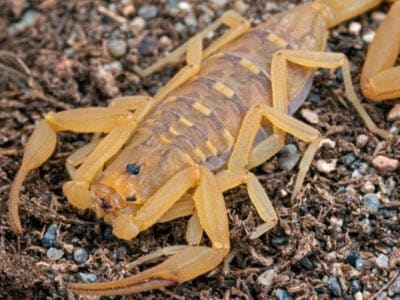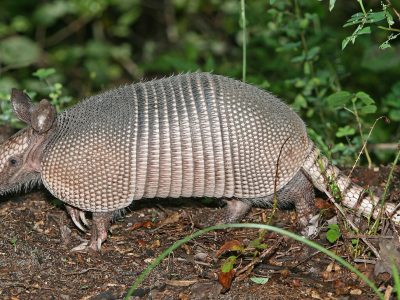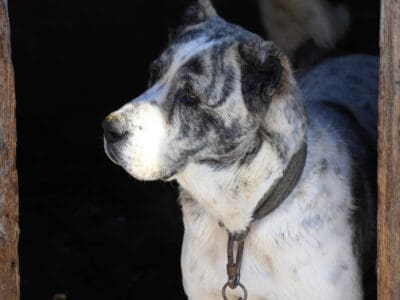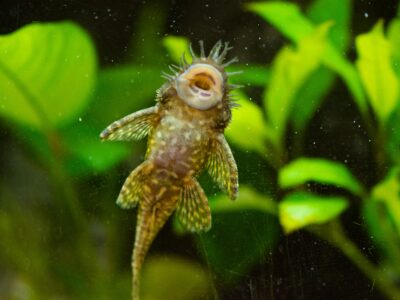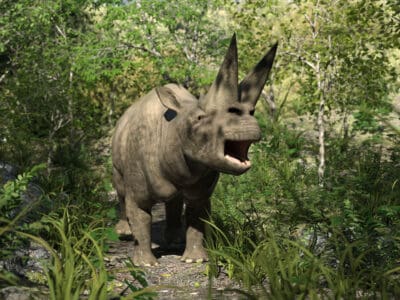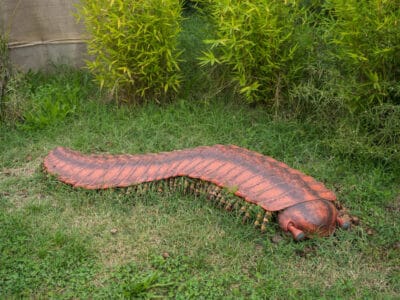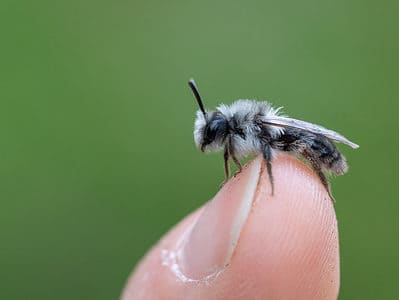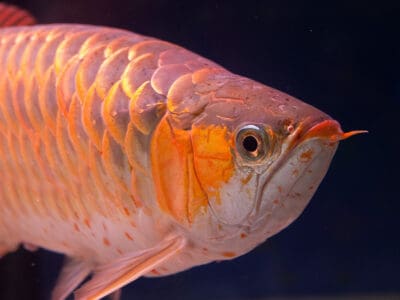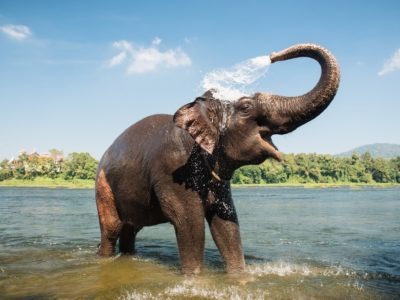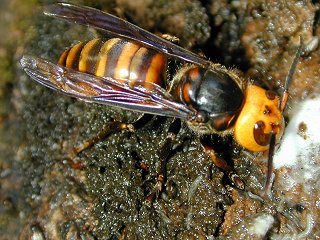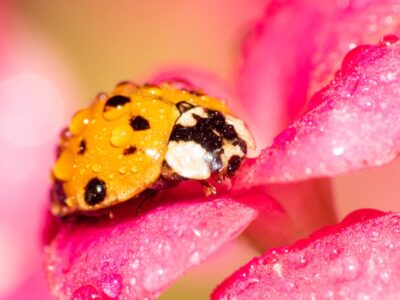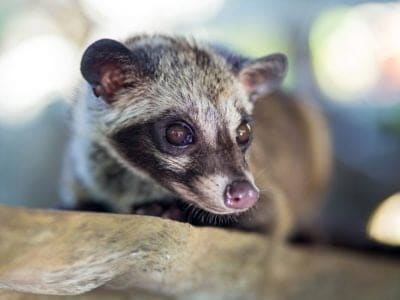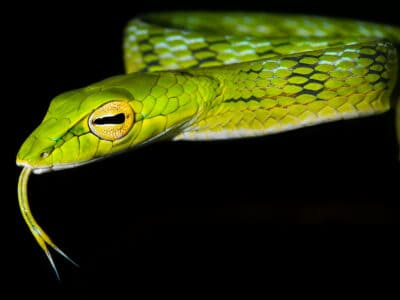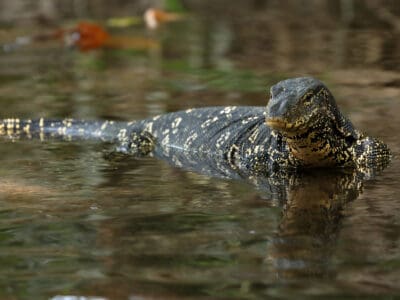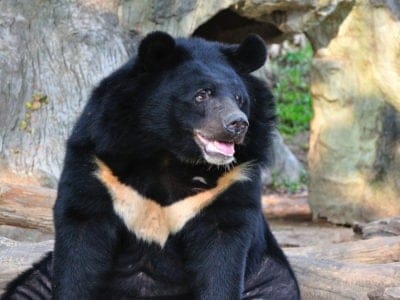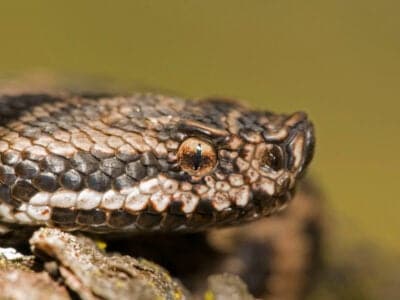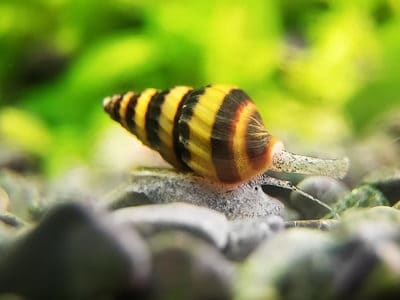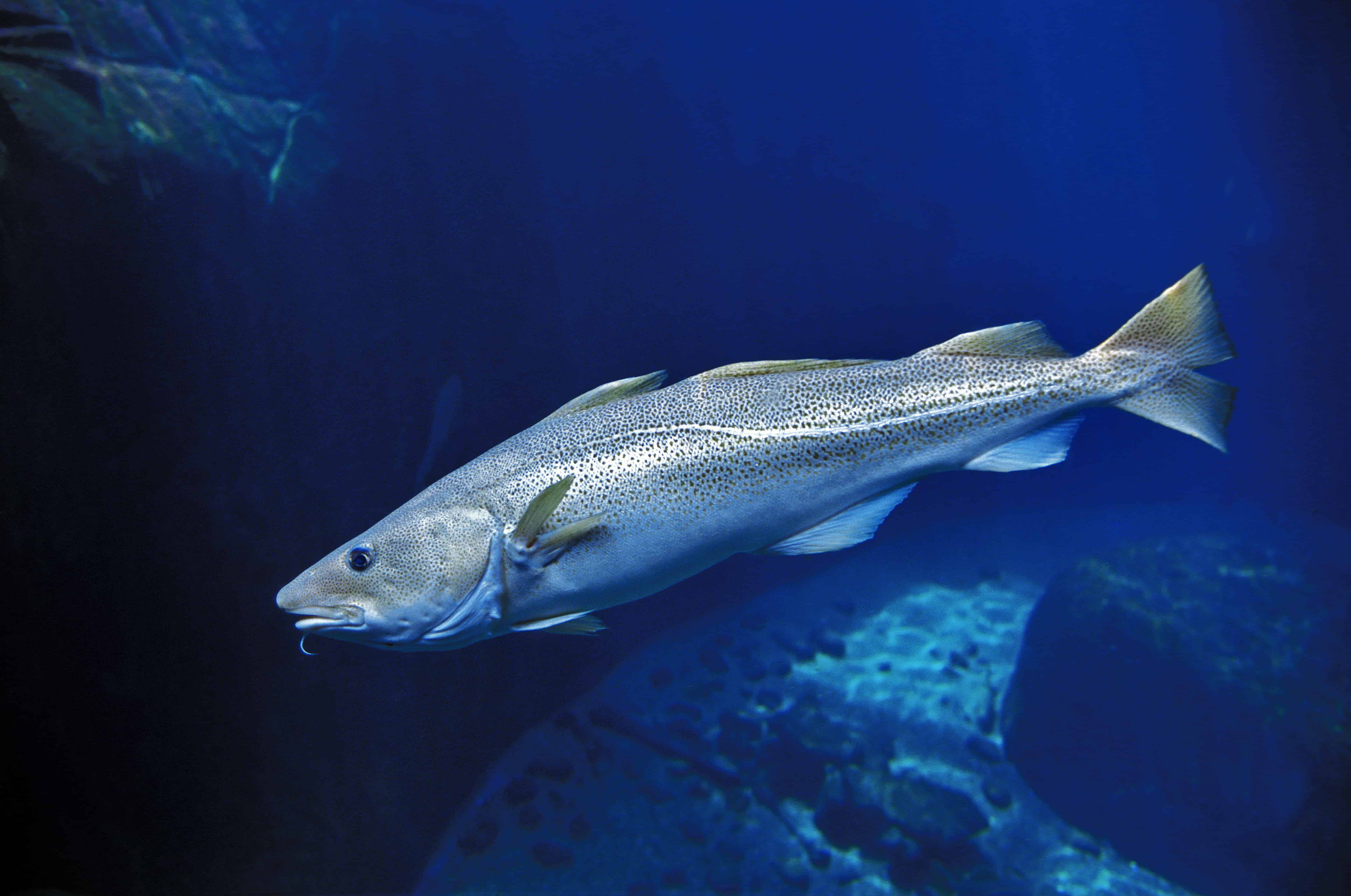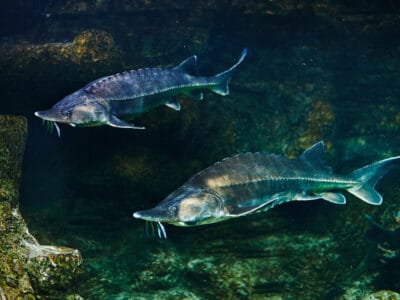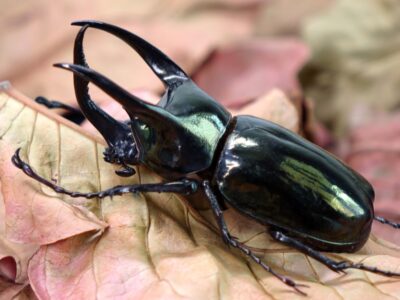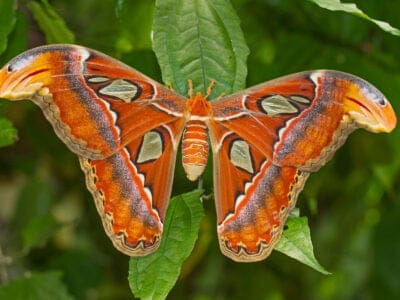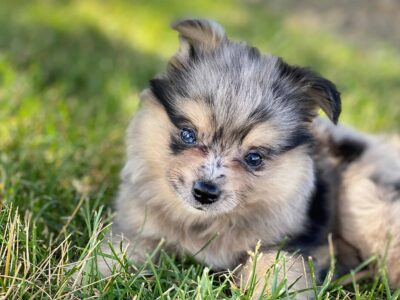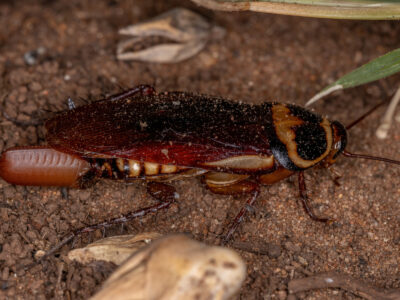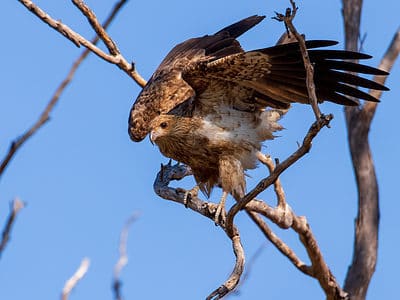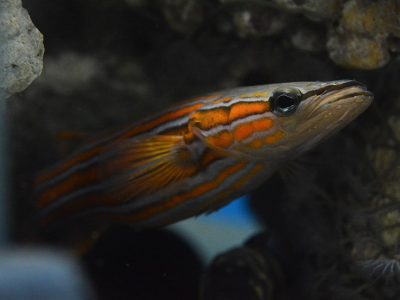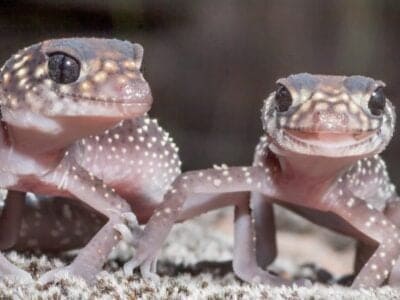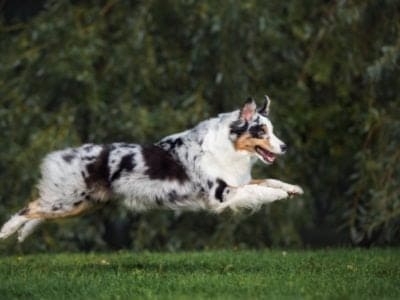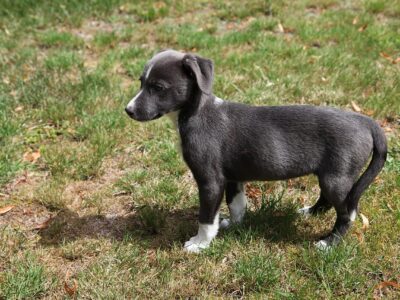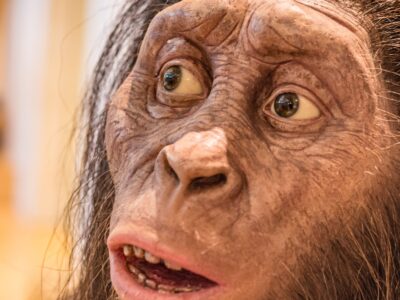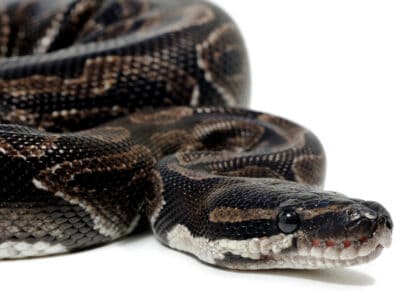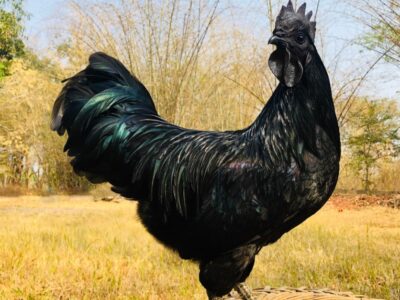A is the first letter in the alphabet, and the second most commonly used. Read below for information on 194 different animals that start with the letter A, from aardvark to aye aye. The most popular animal that starts with A is the Arctic Fox, the least popular is the African Elephant.
Here you will find animals of all shapes and sizes and from all corners of the world. Aquatic marvels like the Amazon river dolphin change color as they age. Learn about mighty pachyderms like the Asian elephant, which has over 1,000 muscles in its trunk. And zoom in on smaller creatures, like the apple moth which burrows and makes its home inside leaves and fruits.
Some other fun facts about A name animals are:
- The African Penguin is the only species of penguin in Africa
- Despite being a popular freshwater aquarium pet, the Axolotl is one of the most difficult animals to find naturally as it’s only found in one complex of lakes near Mexico City.
- The Amur Leopard may be the rarest big cat on earth
Jump to any letter
Alphabetical List of Animals That Start with A
- Aardvark
- Aardwolf
- Abyssinian
- Abyssinian Guinea Pig
- Acadian Flycatcher
- Achrioptera Manga
- Ackie Monitor
- Addax
- Adélie Penguin
- Admiral Butterfly
- Aesculapian Snake
- Affenpinscher
- Afghan Hound
- African Bullfrog
- African Bush Elephant
- African Civet
- African Clawed Frog
- African Elephant
- African Fish Eagle
- African Forest Elephant
- African Golden Cat
- African Grey Parrot
- African Jacana
- African Palm Civet
- African Penguin
- African Sugarcane Borer
- African Tree Toad
- African Wild Dog
- Africanized bee (killer bee)
- Agama Lizard
- Agkistrodon Contortrix
- Agouti
- Aidi
- Ainu
- Airedale Terrier
- Airedoodle
- Akbash
- Akita
- Akita Shepherd
- Alabai (Central Asian Shepherd)
- Alaskan Husky
- Alaskan Klee Kai
- Alaskan Malamute
- Alaskan Pollock
- Alaskan Shepherd
- Albacore Tuna
- Albatross
- Albertonectes
- Albino (Amelanistic) Corn Snake
- Aldabra Giant Tortoise
- Alligator Gar
- Allosaurus
- Allosaurus
- Alpaca
- Alpine Dachsbracke
- Alpine Goat
- Alusky
- Amano Shrimp
- Amargasaurus
- Amazon Parrot
- Amazon River Dolphin (Pink Dolphin)
- Amazon Tree Boa
- Amazonian Royal Flycatcher
- Amberjack
- Ambrosia Beetle
- American Alligator
- American Alsatian
- American Bulldog
- American Bully
- American Cocker Spaniel
- American Cockroach
- American Coonhound
- American Dog Tick
- American Eel
- American Eskimo Dog
- American Foxhound
- American Hairless Terrier
- American Leopard Hound
- American Paddlefish
- American Pit Bull Terrier
- American Pugabull
- American Pygmy Goat
- American Robin
- American Staffordshire Terrier
- American Toad
- American Water Spaniel
- American Wirehair
- Amethystine Python (Scrub Python)
- Amphicoelias Fragillimus
- Amur Leopard
- Anaconda
- Anatolian Shepherd Dog
- Anchovies
- Andrewsarchus
- Angelfish
- Angelshark
- Angled Sunbeam Caterpillar
- Anglerfish
- Angora Ferret
- Angora Goat
- Anhinga
- Anna’s Hummingbird
- Anole Lizard
- Anomalocaris
- Ant
- Antarctic Scale Worm
- Anteater
- Antelope
- Anteosaurus
- Antiguan Racer Snake
- Aoudad Sheep
- Ape
- Apennine Wolf
- Appenzeller Dog
- Apple Head Chihuahua
- Apple Moth
- Arabian Cobra
- Arabian Wolf
- Arafura File Snake
- Arambourgiania
- Arapaima
- Archaeoindris
- Archaeopteryx
- Archaeotherium
- Archelon Turtle
- Archerfish
- Arctic Char
- Arctic Fox
- Arctic Hare
- Arctic Wolf
- Arctodus
- Arctotherium
- Argentavis Magnificens
- Argentine Black and White Tegu
- Argentine Horned Frog
- Argentinosaurus
- Arizona Bark Scorpion
- Arizona Black Rattlesnake
- Arizona Blonde Tarantula
- Arizona Coral Snake
- Armadillo
- Armadillo Lizard
- Armenian Gampr
- Armored Catfish
- Armyworm
- Arsinoitherium
- Arthropleura
- Aruba Rattlesnake
- Ashy Mining Bee
- Asian Arowana
- Asian Carp
- Asian Cockroach
- Asian Elephant
- Asian Giant Hornet
- Asian Lady Beetle
- Asian Longhorn Beetle
- Asian Palm Civet
- Asian Vine Snake
- Asian Water Monitor
- Asiatic Black Bear
- Asp
- Asp Caterpillar
- Assassin Bug
- Assassin Snail
- Atlantic Cod
- Atlantic Salmon
- Atlantic Sturgeon
- Atlas Beetle
- Atlas Moth
- Aurochs
- Aussiedoodle
- Aussiedor
- Aussiepom
- Australian Bulldog
- Australian Cattle Dog
- Australian Cockroach
- Australian Firehawk
- Australian Flathead Perch
- Australian Gecko
- Australian Kelpie Dog
- Australian Labradoodle
- Australian Mist
- Australian Retriever
- Australian Shepherd
- Australian Shepherd Mix
- Australian Terrier
- Australopithecus
- Australorp Chicken
- Avocet
- Axanthic Ball Python
- Axolotl
- Ayam Cemani
- Aye-aye
- Azawakh
Animals that Start with A
Aardvark
- Kingdom
- Animalia
- Phylum
- Chordata
- Class
- Mammalia
- Order
- Tubulidentata
- Family
- Orycteropodidae
- Genus
- Orycteropus
- Scientific Name
- Orycteropus afer
Fun Fact: Can move 2ft of soil in just 15 seconds!
Classification Aardvarks are small pig-like mammals that are found inhabiting a wide range of different habitats throughout Africa, south of the Sahara. They are mostly solitary and spend their days sleeping in underground burrows to protect themselves from the heat of the African sun, emerging in the cooler evening to search for food. Their name […] Read More
Aardwolf
- Kingdom
- Animalia
- Phylum
- Chordata
- Class
- Mammalia
- Order
- Carnivora
- Family
- Hyaenidae
- Genus
- Proteles
- Scientific Name
- Proteles cristata
Fun Fact: The aardwolf has five toes on its front paws
“Aardwolves play a positive role in the ecosystem by limiting the number of termites throughout their natural range.” The aardwolf is the lesser-known cousin of the striped, brown, and spotted hyenas. Because it’s shy, elusive, and nocturnal, it’s rarely encountered by people. The name aardwolf essentially means earth wolf in the Afrikaans and Dutch languages, […] Read More
Abyssinian
- Kingdom
- Animalia
- Phylum
- Chordata
- Class
- Mammalia
- Order
- Carnivora
- Family
- Felidae
- Genus
- Felis
- Scientific Name
- Felis catus
Fun Fact: One of the oldest cat breeds in the world!
Perhaps too much emphasis is given to the uncertain point of origin of the Abyssinian cat. What truly matters is that this friendly, intelligent, curious, and companionable animal is here among us today. A lover of high places and eternally interested in watching what you are doing, the Abyssinian’s exquisite list of traits is the […] Read More
Abyssinian Guinea Pig
- Kingdom
- Animalia
- Phylum
- Chordata
- Class
- Mammalia
- Order
- Rodentia
- Family
- Caviidae
- Genus
- Cavia
- Scientific Name
- Cavia porcellus
Fun Fact: They are one of the oldest breeds of guinea pig
“Abyssinian guinea pigs are one of the oldest breeds of guinea pigs, residing in the mountains of South America.” Summary Despite the name, guinea pigs are not pigs at all but a type of rodent. They are known for their uniquely rough, rosette-patterned fur and ability to make loud noises. These animals make spectacular house […] Read More
Acadian Flycatcher
- Kingdom
- Animalia
- Phylum
- Chordata
- Class
- Aves
- Order
- Passeriformes
- Family
- Tyrannidae
- Genus
- Empidonax
- Scientific Name
- Empidonax virescens
Fun Fact: Their nests are sloppily held together and have an abandoned appearance
“Search for these birds in the mid-story of tall trees and look for quick movements as they sally out to catch insects.” Summary The Acadian flycatcher (Empidonax virescens) is a small passerine bird native to North and South America, where they inhabit wet riverside forests. They spend their days swiftly maneuvering through trees as they […] Read More
Achrioptera Manga
- Kingdom
- Animalia
- Phylum
- Arthropoda
- Class
- Insecta
- Order
- Phasmatodea
- Family
- Phasmatidae
- Genus
- Achrioptera
- Scientific Name
- Achrioptera manga
Fun Fact: Unlike other species of stick insects, the Achrioptera manga's mating season is year-round and mating occurs regularly.
This stick insect has an extremely small range and only lives in very small parts of dry deciduous forests in Madagascar. Achrioptera manga is a species of phasmid, also known as stick insects. These insects camouflage themselves by looking like sticks and leaves. Like many related insects, they can regrow their limbs through regeneration. This […] Read More
Ackie Monitor
- Kingdom
- Animalia
- Phylum
- Chordata
- Class
- Reptilia
- Order
- Squamata
- Family
- Varanidae
- Genus
- Varanus
- Scientific Name
- Varanthus acanthurus
Fun Fact: The ackie monitor has a spiny tail which it uses as in self-defense.
The ackie monitor has a spiny tail which it uses as in self-defense. Ackie Monitor Facts Although “ackies” is a nickname, herpetologists and animal professionals use to call ackie monitors.In their natural rocky habitats, they benefit from the pattern of their skin which serves as camouflage against predators.In the wild, color generally correlates with the […] Read More
Addax
- Kingdom
- Animalia
- Phylum
- Chordata
- Class
- Mammalia
- Order
- Artiodactyla
- Family
- Bovidae
- Genus
- Addax
- Scientific Name
- Addax nasomaculatus
Fun Fact: The hooves of the addax are splayed and have flat, springy soles, one of the adaptations that help it walk over sand.
Critically Endangered Antelope of the African Desert The Addax, a beautiful antelope also called the screwhorn or white antelope, once ranged over the Sahara Desert. Now it is on the edge of extinction due to poaching, climate change, overhunting, and habitat destruction. Fortunately, efforts are being made to return its wild population to healthy numbers. […] Read More
Adélie Penguin
- Kingdom
- Animalia
- Phylum
- Chordata
- Class
- Aves
- Order
- Sphenisciformes
- Family
- Spheniscidae
- Genus
- Pygoscelis
- Scientific Name
- Pygoscelis adeliae
Fun Fact: Eats up to 2kg of food per day!
Classification and Evolution French explorer Jules Dumont d’Urville discovered this penguin in 1840. The species received its name from Adélie Land in France, which d’Urville named after his wife, Adélie. The Adélie penguin is the smallest and most widely distributed species of penguin in the Southern Ocean. It is one of only two species of […] Read More
Admiral Butterfly
- Kingdom
- Animalia
- Phylum
- Arthropoda
- Class
- Insecta
- Order
- Lepidoptera
- Family
- Nymphalidae
Fun Fact: Stunningly beautiful wings
Admiral Butterfly Summary Admiral butterflies are any of several species within the genera Limenitis and Vanessa. These insects are known for their flashy colors and patterns, some of which resemble the insignia of military officers. They survive mainly on nectar from flowers and the juices of rotting fruits or animal corpses, though they may also […] Read More
Aesculapian Snake
- Kingdom
- Animalia
- Phylum
- Chordata
- Class
- Reptilia
- Order
- Squamata
- Family
- Colubridae
- Genus
- Zamenis
- Scientific Name
- Zamenis longissimus
Fun Fact:
The Aesculapian snake is one of the longest snakes in all of Europe. The Aesculapian snake may seem large and intimidating, but in reality, this non-venomous species is fairly harmless. The old adage that it is more afraid of you than you are afraid of it happens to be very true in this particular case. […] Read More
Affenpinscher
- Kingdom
- Animalia
- Phylum
- Chordata
- Class
- Mammalia
- Order
- Carnivora
- Family
- Canidae
- Genus
- Canis
- Scientific Name
- Canis Lupus
Fun Fact: First bred in 17th century Germany!
In Germany, Affenpinscher’s were used to hunt down rats and mice in stables. An Affenpinscher is a fearless dog brimming with confidence. This may seem funny seeing that it’s a member of the Toy group and only weighs around 10 pounds fully grown. But, in its mind, this dog is a Great Dane!The history of […] Read More
Afghan Hound
- Kingdom
- Animalia
- Phylum
- Chordata
- Class
- Mammalia
- Order
- Carnivora
- Family
- Canidae
- Genus
- Canis
- Scientific Name
- Canis Lupus
Fun Fact: First used as a shepherd and hunter!
Afghan Hounds are one of the oldest dog breeds in the world, though they are now found in several rescue shelters around the world. Afghan Hounds date back to ancient times, and the pedigree database dates back thousands of years ago by people of Afghanistan, North India, and Pakistan. Though they are easily found in […] Read More
African Bullfrog
- Kingdom
- Animalia
- Phylum
- Chordata
- Class
- Amphibia
- Order
- Anura
- Family
- Pyxicephalidae
- Genus
- Pyxicephalus
- Scientific Name
- Pyxicephalus adspersus
Fun Fact: The African bullfrog is one of only three species of frog that have “teeth.”
The African bullfrog is the biggest frog in sub-Saharan Africa. The African bullfrog is one of the largest frogs on Earth, with the Goliath Frog being the biggest. Also known as the Giant African Bullfrog, the male of the species can grow to 10 inches long and weigh more than 4 pounds. This bullfrog primarily […] Read More
African Bush Elephant
- Kingdom
- Animalia
- Phylum
- Chordata
- Class
- Mammalia
- Order
- Proboscidea
- Family
- Elephantidae
- Genus
- Loxodonta
- Scientific Name
- Loxodonta africana africana
Fun Fact: Can drink up to 50 gallons a day
Classification and Evolution The African Bush Elephant is the largest of all living creatures on land today, with some individuals growing to weigh more than 6 tons. The elephant is thought to have been named after the Greek word for ivory, meaning that elephants were named for their uniquely long tusks. Although many of the […] Read More
African Civet
- Kingdom
- Animalia
- Phylum
- Chordata
- Class
- Mammalia
- Order
- Carnivora
- Family
- Viverridae
- Genus
- Civettictis
- Scientific Name
- Civettictis civetta
Fun Fact: Secretes up to 4g of musk every week!
Classification And Evolution The African Civet is a large species of civet found in savannahs and forests across sub-Saharan Africa. It is the only member in its genus and is considered to be the largest civet-like animal on the African continent. Regardless of their cat-like appearance, African Civets are not felines but are in fact, […] Read More
African Clawed Frog
- Kingdom
- Animalia
- Phylum
- Chordata
- Class
- Amphibia
- Order
- Anura
- Family
- Pipidae
- Genus
- Xenopus
- Scientific Name
- Xenopus laevis
Fun Fact: African clawed frogs were used as pregnancy testers from the 1930s to the early 1960s.
The African clawed frog has four sets of chromosomes, which is unusual as many organisms including humans have two sets. The African clawed frog is a large frog mainly found dwelling at the bottom of lakes and rivers. Also called the platanna, it has a number of unique features that show its adaptation to its […] Read More
African Elephant
- Kingdom
- Animalia
- Phylum
- Chordata
- Class
- Mammalia
- Order
- Proboscidea
- Family
- Elephantidae
- Genus
- Loxodonta
- Scientific Name
- L. africana
Fun Fact: Both male and female African elephants have tusks. In Asian elephants, only the males have tusks.
Enjoy a well-researched article on the African elephant. Discover African elephant behavior & see high-quality pictures of African elephants. Read More
African Fish Eagle
- Kingdom
- Animalia
- Phylum
- Chordata
- Class
- Aves
- Order
- Accipitriformes
- Family
- Accipitridae
- Genus
- Haliaeetus
- Scientific Name
- Haliaeetus Vocifer
Fun Fact: African fish eagles belong to the genus of sea eagles
It is nicknamed the voice of Africa. Nicknamed “the voice of Africa,” African fish eagles have loud distinctive calls that reverberate over the freshwater lakes of sub-Saharan Africa. This large eagle inhabits areas near significant bodies of water with plenty of food. Its reach is far and wide throughout the continent; it is the national […] Read More
African Forest Elephant
- Kingdom
- Animalia
- Phylum
- Chordata
- Class
- Mammalia
- Order
- Proboscidea
- Family
- Elephantidae
- Genus
- Loxodonta
- Scientific Name
- Loxodonta cyclotis
Fun Fact: Have large rounded ears to help keep them cool!
African Forest Elephant Classification and Evolution The African Forest Elephant is one of two Elephant subspecies on the African continent. Until recently, scientists thought they were the same species. But further study revealed enough variation to warrant subspecies status. African Forest Elephants are slightly smaller than African Bush Elephants, but they’re still one of the […] Read More
African Golden Cat
- Kingdom
- Animalia
- Phylum
- Chordata
- Class
- Mammalia
- Order
- Carnivora
- Family
- Felidae
- Genus
- Caracal
- Scientific Name
- Caracal aurata
Fun Fact: The first image of an African golden cat was captured in the wild in Gabon in 2002.
The first image of an African golden cat was captured in the wild in Gabon in 2002. Conservation Status The African Golden Cat is an elusive animal rarely observed in its natural habitat. The IUCN Red List declared the species as Vulnerable and on the decline because of habitat loss caused by commercial farming, wood […] Read More
African Grey Parrot
- Kingdom
- Animalia
- Phylum
- Chordata
- Class
- Aves
- Order
- Psittaciformes
- Family
- Psittacidae
- Genus
- Psittacus
- Scientific Name
- Psittacus erithacus
Fun Fact: When a grey parrot named Yosuke got lost, it was reunited with its owner after giving the owner's name and address.
“The African grey parrot is the largest parrot in Africa.” Of all the talking parrots, the African grey parrot is one of the most amazing. Its intelligence is such that it not only talks but understands what it’s hearing and what it’s saying back. Unfortunately, this parrot is in such demand as a pet that […] Read More
African Jacana
- Kingdom
- Animalia
- Phylum
- Chordata
- Class
- Aves
- Order
- Charadriformes
- Family
- Jacanidae
- Genus
- Actophilornis
- Scientific Name
- Actophilornis Africanus
Fun Fact: The males raise the young
“They have enormous feet with elongated toes.” The African jacana is one of our planet’s most unique and interesting birds. From their gigantic toes, fascinating parenting techniques, and quirky calls, these aquatic birds are a one-of-a-kind species to study. Learn all about this African bird, including where you can find it, how it cares for […] Read More
African Palm Civet
- Kingdom
- Animalia
- Phylum
- Chordata
- Class
- Mammalia
- Order
- Carnivora
- Family
- Nandiniidae
- Genus
- Nandinia
- Scientific Name
- Nandinia binotata
Fun Fact: Solitary but gathers in groups!
Classification And Evolution The African Palm Civet, also referred to as the Two-Spotted Palm Civet, is a Civet species native to the tropical jungles of eastern and central Africa. The African Palm Civet is in a genetic group of its own, Civettictis civetta, unlike the other Civet species, belonging to the larger group Viverra, which […] Read More
African Penguin
- Kingdom
- Animalia
- Phylum
- Chordata
- Class
- Aves
- Order
- Sphenisciformes
- Family
- Spheniscidae
- Genus
- Spheniscus
- Scientific Name
- Spheniscus demersus
Fun Fact: The only penguin species in Africa!
African Penguin Classification The African Penguin is a small to medium-sized Penguin species that is found along the coast of South Africa and on a number of its surrounding islands. The African Penguin is thought to be most closely related to the Humboldt and Magellanic Penguins found in southern South America, and the Galapagos Penguin […] Read More
African Sugarcane Borer
- Kingdom
- Animalia
- Phylum
- Arthropoda
- Class
- Insecta
- Order
- Lepidoptera
- Family
- Pyralidae
- Genus
- Eldana
- Scientific Name
- Eldana saccharina
Fun Fact: N/A
The African sugarcane borer (Eldana saccharina) is a moth in a league of its own, or more precisely, a genus of its own! Eldana saccharina is the sole species in the genus Eldana. It is a destructive pest that poses a significant threat to sugarcane production in Africa. The larvae of this insect bore into […] Read More
African Tree Toad
- Kingdom
- Animalia
- Phylum
- Chordata
- Class
- Amphibia
- Order
- Anura
- Family
- Bufonidae
- Genus
- Nectophryne
- Scientific Name
- Nectophryne afra
Fun Fact: Found in tropical moist lowland forests!
Like many other toads and frogs in the same family, the African Tree Toad’s toxins have medicinal uses. The African tree toad is a small toad in the family Bufonidae, in the order Anura. Its habitat is the tropical and subtropical lowland forests of West and Central Africa. Its color is a combination of brown, […] Read More
African Wild Dog
- Kingdom
- Animalia
- Phylum
- Chordata
- Class
- Mammalia
- Order
- Carnivora
- Family
- Canidae
- Genus
- Lycaon
- Scientific Name
- Lycaon pictus
Fun Fact: Also known as the painted dog!
Two Incredible Facts: The long large intestines of the African Wild Dogs means that they have a very efficient system for absorbing as much moisture from their food as possible. This gives these canines an advantage in arid climates as they do not need to find such a regular supply of water. African Wild Dogs […] Read More
Africanized bee (killer bee)
- Kingdom
- Animalia
- Phylum
- Arthropoda
- Class
- Insecta
- Order
- Hymenoptera
- Family
- Apidae
- Genus
- Apis
- Scientific Name
- Apis mellifera
Fun Fact: Will chase intruders up to a quarter mile from their hives
Summary One of the most aggressive insects in the world, the Africanized bee is a hybrid of the western honey bee. Breeders created the first of these by crossbreeding East African lowland honey bees with European honey bee subspecies. Over the years, numerous hives escaped captivity and spread throughout North and South America. They are […] Read More
Agama Lizard
- Kingdom
- Animalia
- Phylum
- Chordata
- Class
- Reptilia
- Order
- Squamata
- Family
- Agamidae
- Genus
- Agama
Fun Fact: The agama forms small social groups that contain both dominant and subordinate males.
The Agama Lizard live in small social groups consisting of a dominant male and several subordinate males and females. The agama is a genus of lizards that lives throughout sub-Saharan Africa. There are more than 40 recognized species within this genus, but for the purpose of this article, the common agama or red-headed agama lizard […] Read More
Agkistrodon Contortrix
- Kingdom
- Animalia
- Phylum
- Chordata
- Class
- Reptilia
- Order
- Squamata
- Family
- Viperidae
- Genus
- Agkistrodon
- Scientific Name
- Agkistrodon contortrix
Fun Fact:
Agkistrodon contortrix, also known as the eastern copperhead snake, is a venomous type of viper snake native to forests throughout the eastern North American continent. Easily distinguishable by its vibrant copperhead with hourglass shape markings, this snake differs from other vipers by “freezing” when they encounter humans. That said, they still bite more people than […] Read More
Agouti
- Kingdom
- Animalia
- Phylum
- Chordata
- Class
- Mammalia
- Order
- Rodentia
- Family
- Dasyproctidae
- Genus
- Dasyprocta
Fun Fact: The agouti is one of the only animals that can crack open Brazil nut pods!
The agouti is one of the only animals that can crack open Brazil nut pods! Agoutis live in the forests of South America, Central America, and far southern Mexico. They are large rodents that grow up to two feet long and weigh between 4.4 and 11 pounds. They are roughly the size of a jackrabbit. […] Read More
Aidi
- Kingdom
- Animalia
- Phylum
- Chordata
- Class
- Mammalia
- Order
- Carnivora
- Family
- Canidae
- Genus
- Canis
- Scientific Name
- Canis lupus
Fun Fact: The Aidi's cheerful personality and relaxed temperament are just two reasons why this dog is a good choice for families with kids.
Aidi dogs are rarely seen in other regions outside of their native North Africa. The Aidi, which originates from Morocco in North Africa, is an expert at protecting herds of sheep and other livestock from jackals and other predators. It is also used on hunting trips due to its excellent sense of smell. Affectionate, playful, […] Read More
Ainu
- Kingdom
- Animalia
- Phylum
- Chordata
- Class
- Mammalia
- Order
- Carnivora
- Family
- Canidae
- Genus
- Canis
- Scientific Name
- Canis lupus
Fun Fact: An innate sense of direction!
Also known as Hokkaido dogs or Seta dogs, Ainu dogs are fluffy hunting dogs that have been native to Japan for hundreds of years. These strong, loyal, and dedicated pets are known for being extremely devoted to their owners and are often sought out as lifelong companions. Ainu dogs have chipper, upbeat personalities that are […] Read More
Airedale Terrier
- Kingdom
- Animalia
- Phylum
- Chordata
- Class
- Mammalia
- Order
- Carnivora
- Family
- Canidae
- Genus
- Canis
- Scientific Name
- Canis Lupus
Fun Fact: Very intelligent, independent and strong-minded!
Known as the King of Terriers, the Airedale’s origins date back to the mid-19th century in England. The Airedale Terrier’s main claim to fame is that it’s the biggest of all terriers. Known as the King of Terriers, the Airedale’s origins date back to the mid-19th century in England. The Yorkshire working class wanted a […] Read More
Airedoodle
- Kingdom
- Animalia
- Phylum
- Chordata
- Class
- Mammalia
- Order
- Carnivora
- Family
- Canidae
- Genus
- Canis
- Scientific Name
- Canis lupus
Fun Fact: This is a great pooch for rough-housing and one-to-one.
Airedoodles have learned how to ride a skateboard. Your Airedoodle is a great animal! Relatively new to the United States, the Airedoodle appreciates human companionship and is ideal for an active family. We’re talking about the great outdoors family. The breed is a mix of poodle and Airedale Terrier. According to the American Kennel Club, […] Read More
Akbash
- Kingdom
- Animalia
- Phylum
- Chordata
- Class
- Mammalia
- Order
- Carnivora
- Family
- Canidae
- Genus
- Canis
- Scientific Name
- Canis Lupus
Fun Fact: Often used as a guard dog!
Akbash dogs are a rare breed outside of Turkey. The Akbash, also called the Coban Kopegi, the Akbas, or Aky, is an ancient large to giant dog breed from Turkey dating back from 3,000 years ago. It was brought to North America in 1970. One of the best watchdogs, it is part of the Working […] Read More
Akita
- Kingdom
- Animalia
- Phylum
- Chordata
- Class
- Mammalia
- Order
- Carnivora
- Family
- Canidae
- Genus
- Canis
- Scientific Name
- Canis lupus
Fun Fact: Very clean, intelligent and loyal!
Key Facts The Akita was once exclusively kept by the Japanese royal family and served as a hunting dog.Although it is fiercely loyal to its owner, the Akita may not get along well with other canines.The Akita must be socialized early in its life, unless it may exhibit anti-social behavior once it has grown. The […] Read More
Akita Shepherd
- Kingdom
- Animalia
- Phylum
- Chordata
- Class
- Mammalia
- Order
- Carnivora
- Family
- Canidae
- Genus
- Canis
- Scientific Name
- Canis lupus
Fun Fact: The Akita Shepherd descends from a lineage of working dogs.
As a mix between two working breeds, the Akita Shepherd can make a great guard or police dog. The Akita Shepherd was created during the 1950s and is a mix of two big, strong dog breeds: the Akita Inu and the German Shepherd. These two breeds synergize well together. The Akita is a loyal and […] Read More
Alabai (Central Asian Shepherd)
- Kingdom
- Animalia
- Phylum
- Chordata
- Class
- Mammalia
- Order
- Carnivora
- Family
- Canidae
- Genus
- Canis
- Scientific Name
- Canis lupus
Fun Fact: The Alabai’s genes indicate that this breed has been around for more than 5,000 years.
The Alabai’s genes indicate that this breed has been around for more than 5,000 years. The Alabai dog, commonly referred to as the Central Asian Shepherd Dog, is a very large breed. They can be traced back over 5,000 years and have historically been used as a guard dog for goats and sheep. Today, the […] Read More
Alaskan Husky
- Kingdom
- Animalia
- Phylum
- Chordata
- Class
- Mammalia
- Order
- Carnivora
- Family
- Canidae
- Genus
- Canis
- Scientific Name
- Canis lupus
Fun Fact: The Alaskan Husky is one of the most common sled dogs in the world
The Alaskan Husky is bred to be the ultimate sled dog. They can easily burn 10,000 calories a day in the grueling race. The Alaskan Husky is an athletic working dog that arose from a cross between several similar yet distinctive breeds, most likely originating almost 10,000 years ago. Genetically, it’s a close relative of […] Read More
Alaskan Klee Kai
- Kingdom
- Animalia
- Phylum
- Chordata
- Class
- Mammalia
- Order
- Carnivora
- Family
- Canidae
- Genus
- Canis
- Scientific Name
- Canis lupus
Fun Fact: Alaskan Klee Kais love to communicate with their families. In addition to barking, they make other vocalizations, such as yodeling and howling.
The Alaskan Klee Kai’s popularity is growing, and small litter size and its recent addition to the American Kennel Club mean you may wait a while to find a puppy. With an appearance similar to his larger ancestors, the Siberian and Alaskan Huskies, the Alaskan Klee Kai is an active companion for those who can […] Read More
Alaskan Malamute
- Kingdom
- Animalia
- Phylum
- Chordata
- Class
- Mammalia
- Order
- Carnivora
- Family
- Canidae
- Genus
- Canis
- Scientific Name
- Canis Lupus
Fun Fact: Often used as sled dogs!
Alaskan malamutes are highly intelligent and social dogs. They’re energetic and highly affectionate. The Alaskan malamute is a member of the spitz family of dog breeds and was bred by the Inuit people to pull their sleds. They have a similar appearance to the Siberian husky, but when they stand side by side, the giant, […] Read More
Alaskan Pollock
- Kingdom
- Animalia
- Phylum
- Chordata
- Class
- Actinopterygii
- Order
- Gadiformes
- Family
- Gadidae
- Genus
- Gadus
- Scientific Name
- Gadus chalcogrammus
Fun Fact: It's one of the most commonly eaten fish in the world
The Alaskan pollock, also called walleye pollock, is closely related to Alaskan cod and haddock. The marine fish species lives in the North Pacific and the Arctic Ocean and is the national fish of Korea, where it has over 31 names. Caught from Alaska to northern Japan every year, this fish species is the world’s […] Read More
Alaskan Shepherd
- Kingdom
- Animalia
- Phylum
- Chordata
- Class
- Mammalia
- Order
- Carnivora
- Family
- Canidae
- Genus
- Canis
- Scientific Name
- Canis lupus
Fun Fact: This dog’s Malamute ancestors once came to America across the Bering Strait.
Both the Alaskan Shepherd’s parents, the Alaskan Malamute and German Shepherd, were bred to have a wolf-like appearance (although the German Shepherd is a more recent breed, having been created in the 19th century). The Alaskan Shepherd is a hybrid crossbreed dog that blends together two hefty breeds: the Alaskan Malamute and the German Shepherd. […] Read More
Albacore Tuna
- Kingdom
- Animalia
- Phylum
- Chordata
- Class
- Actinopterygii
- Order
- Scombriformes
- Family
- Scombridae
- Genus
- Thunnus
- Scientific Name
- Thunnus alalunga
Fun Fact: The albacore is a very fast swimmer
The Albacore Tuna, or longfin tuna, is a large smooth-skinned pelagic fish that roams the open oceans in massive schools. As one of the main cornerstones of the world’s fishing industries, albacore stocks are carefully managed by governmental agencies to prevent overfishing. 3 Incredible Albacore Tuna Facts Schools of albacore can stretch up to 19 […] Read More
Albatross
- Kingdom
- Animalia
- Phylum
- Chordata
- Class
- Aves
- Order
- Procellariiformes
- Family
- Diomedeidae
- Scientific Name
- Diomedeidae
Fun Fact: The largest wingspan of any bird in the world!
The albatross soars gracefully above the oceans, its wings stiff and firm against the strong gusts of wind. The sight of this familiar seabird and its massive wingspan flying high above the waters has seized the human imagination and inspired myths and folklore around the world for many centuries. It’s a true survivor with all […] Read More
Albertonectes
- Kingdom
- Animalia
- Phylum
- Chordata
- Class
- Reptilia
- Order
- Plesiosauria
- Family
- Elasmosauridae
- Genus
- Albertonectes
- Scientific Name
- Albertonectes vanderveldei
Fun Fact: The Albertonectes had the longest neck out of other Elasmosaurids.
Introduction The Albertonectes (Albertonectes vanderveldei) was a genus of plesiosaur from the elasmosauridae family. They roamed the earth during the Late Cretaceous Period (100.5 to 66 million years ago) and are now extinct. The Albertonectes were different than your average dinosaur even though they are placed in the same category. They were more similar to […] Read More
Albino (Amelanistic) Corn Snake
- Kingdom
- Animalia
- Phylum
- Chordata
- Class
- Reptilia
- Order
- Squamata
- Family
- Colubridae
- Genus
- Pantherophis
- Scientific Name
- Pantherophis guttatus
Fun Fact: Albino corn snakes make great beginner snakes.
Albino corn snakes are a color morph of corn snakes with all the dark colors missing. The first genetic color mutation discovered in corn snakes was albinism or amelanism. Dr. Bernard Bechtel first produced an amelanistic corn snake in 1961. Corn snakes are native to the southeastern United States and can live for up to […] Read More
Aldabra Giant Tortoise
- Kingdom
- Animalia
- Phylum
- Chordata
- Class
- Reptilia
- Order
- Testudines
- Family
- Testudinidae
- Genus
- Geochelone
- Scientific Name
- Geochelone gigantea
Fun Fact: One got to be 255 years old!
Classification and Evolution The Aldabra Giant Tortoise is a massive, long-necked reptile endemic to the Aldabra Islands off the East Coast of Africa. The Aldabra giant tortoise is among the biggest types of land tortoise and longest-living animals on the planet, with one Aldabra Giant Tortoise living to the impressive age of 255 years old. […] Read More
Alligator Gar
- Kingdom
- Animalia
- Phylum
- Chordata
- Class
- Actinopterygii
- Order
- Lepisosteiformes
- Family
- Lepisosteidae
- Genus
- Atractosteus
- Scientific Name
- Atractosteus spatula
Fun Fact: The alligator gar has toxic eggs to protect against predators
The giant alligator gar is among the biggest freshwater fish in the world, but don’t let the large teeth and fearsome appearance fool you. It poses no particular risk of attack to humans. Unfortunately, this species has earned an unfavorable reputation in its native habitat as a trash fish. On the mistaken belief that it […] Read More
Allosaurus
- Kingdom
- Animalia
- Phylum
- Chordata
- Class
- Reptilia
- Order
- Saurischia
- Family
- Allosauridae
- Genus
- Allosaurus
- Scientific Name
- Allosaurus fragilis
Fun Fact: Differnt Lizard” or Allosaurus weighed around two tonnes that is almost equal to a car.
Description and Size Allosaurus fragilis is a species whose Greek translation is “different lizard.” It is considered a main part of the Theropod group, meaning it preys on flesh. Fun Allosaurus Facts They are one of the most dominant fossils found around the world which is why paleontologists had a lot to study. Here are […] Read More
Allosaurus
- Kingdom
- Animalia
- Phylum
- Chordata
- Family
- Allosauridae
- Genus
- Allosaurus
- Scientific Name
- Allosaurus fragilis
Fun Fact: Allosaurus is the official state fossil of Utah because of the abundant number of fossils found in the state.
The Allosaurus is a genus of large, theropod dinosaurs that lived during the Jurassic epoch about 155 to 145 million years ago. It was a massive, bipedal dinosaur, which means it walked on its two hind legs and had short arms. It is one of the best-known dinosaurs of all time due to the abundance […] Read More
Alpaca
- Kingdom
- Animalia
- Phylum
- Chordata
- Class
- Mammalia
- Order
- Artiodactyla
- Family
- Camelidae
- Genus
- Vicugna
- Scientific Name
- Vicugna pacos
Fun Fact: They can spit up to 10 feet.
The alpaca is a camelid mammal native to South America. Closely related to its larger cousin, the llama, the two species are able to interbreed. Yarn spun from alpaca wool is popular for warm, soft sweaters, socks, mittens, and hats, making the fur of these domesticated animals a valuable commodity. Five Incredible Alpaca Facts! The […] Read More
Alpine Dachsbracke
- Kingdom
- Animalia
- Phylum
- Chordata
- Class
- Mammalia
- Order
- Carnivora
- Family
- Canidae
- Genus
- Canis
- Scientific Name
- Canis lupus
Fun Fact: Good companion and hard-working breed!
Alpine Dachsbrackes are experts at picking up scents on a trail that has gone cold. Take one look at the Alpine Dachsbracke and you may think you’re seeing a dachshund. This breed is a mix between a dachshund and an Austrian black and tan hound. It originated in Austria in the mid-nineteenth century. This breed […] Read More
Alpine Goat
- Kingdom
- Animalia
- Phylum
- Chordata
- Class
- Mammalia
- Order
- Artiodactyla
- Family
- Bovidae
- Genus
- Capra
- Scientific Name
- Capra aegagrus hircus
Fun Fact: Alpine goats are the most common type of goat used for milk, cheese, and other dairy products
“The alpine goat is one of the most popular goats for dairy production in the entire world.” With sweet faces and strong bodies, alpine goats are a common sight on farms and ranches throughout the Western world. The origin of these goats is generally accepted to be the mountainous French countryside, although the species has […] Read More
Alusky
- Kingdom
- Animalia
- Phylum
- Chordata
- Class
- Mammalia
- Order
- Carnivora
- Family
- Canidae
- Genus
- Canis
- Scientific Name
- Canis lupus
Fun Fact: An Alusky loves to dig, so make sure your fence is planted deep in the ground to prevent any escapes!
The Alusky is excellent at pulling sleds and carts like its purebred parents. Breed a Siberian Husky with an Alaskan Malamute and you get another dog that loves the cold weather! Specifically, you have a hybrid dog known as an Alusky. Aluskies are friendly, social dogs with a lot of energy to spare. These dogs […] Read More
Amano Shrimp
- Kingdom
- Animalia
- Phylum
- Arthropoda
- Class
- Malacostraca
- Order
- Decapoda
- Family
- Atyidae
- Genus
- Caridina
- Scientific Name
- Caridina multidentata
Fun Fact: Popular kept in aquariums to keep them clean
Summary Popular in the aquarium trade, the Amano shrimp goes by many names, including the Yamato shrimp, Japanese shrimp, and algae shrimp. Native to Taiwan and Japan, they primarily feed on algae, hence their name. While they are born in freshwater, the larvae drift out to sea to develop before returning to freshwater as adults. […] Read More
Amargasaurus
- Kingdom
- Animalia
- Phylum
- Chordata
- Family
- Dicraeosauridae
- Genus
- Amargasaurus
- Scientific Name
- Amargasaurus cazaui
Fun Fact:
Have you ever seen a complete skeleton of a brand new species of dinosaur? When paleontologists discovered the Amargasaurus in 1984 in Argentina, they were amazed that the intact fossilized skeleton included a fragmented skull. This herbivore was a Sauropod that lived during the Cretaceous period and is one of the most-studied dinosaurs of our […] Read More
Amazon Parrot
- Kingdom
- Animalia
- Phylum
- Chordata
- Class
- Aves
- Order
- Psittaciformes
- Family
- Psittacidae
- Genus
- Amazona
Fun Fact: These parrots can be trained to be "talking birds" that mimic human speech
“An Amazon Parrot is a beautiful bird with lots of personality.” Amazon parrots, which are often called amazons, are large members of the Psittacidae family. They are mostly native to South America. There are 35 species and several subspecies, and many can be trained to be talking birds to some extent. Physical features include big, […] Read More
Amazon River Dolphin (Pink Dolphin)
- Kingdom
- Animalia
- Phylum
- Chordata
- Class
- Mammalia
- Order
- Cetacea
- Family
- Platanistoidea
- Genus
- Platanistidae
- Scientific Name
- Platanistoidea
Fun Fact: Also known as the 'Pink Dolphin'
The Amazon pink river dolphin is the biggest and smartest animal of the freshwater dolphin species. The Amazon river dolphin (also known as the pink dolphin and botos) is a freshwater animal and a species of toothed whale. It lives in the Amazon, Orinoco and Araguaian river rivers located in Bolivia, Columbia, Ecuador, Brazil, Venezuela, […] Read More
Amazon Tree Boa
- Kingdom
- Animalia
- Phylum
- Chordata
- Class
- Reptilia
- Order
- Squamata
- Family
- Pythonidae
- Genus
- Corallus
- Scientific Name
- Corallus hortulanus
Fun Fact: Amazon tree boas come in a rainbow of colors.
Amazon tree boas are widely kept as pets, but surprisingly little is known about them in the wild. This slender boa naturally comes in several colors, called phases. It’s a nonvenomous cousin to the emerald tree boa (Corallus caninus). Both are popular pets among experienced herpetoculturists and prized jewels of some zoo collections. Incredible Amazon […] Read More
Amazonian Royal Flycatcher
- Kingdom
- Animalia
Fun Fact: They use their bright royal-looking crests during mating season
“These flycatchers are named for their royal-looking crowns.” Summary The Amazonian royal flycatcher is a medium-sized passerine bird native to the Amazon basin in South America. It inhabits humid lowland forests near streams, where it lives quietly and primarily unnoticed. During courtship, however, it flashes its large, colorful fan-like crest in hopes of attracting a […] Read More
Amberjack
- Kingdom
- Animalia
- Phylum
- Chordata
- Class
- Actinopterygii
- Order
- Perciformes
- Family
- Carangidae
- Genus
- Seriola
- Scientific Name
- Seriola
Fun Fact: Amberjack can grow up to 200 pounds
If you want to try to catch a fish that is powerful as well as delicious, amberjack is a great option. These fish live in both the Atlantic and Pacific oceans and can be caught near reefs or wrecks, where they like to live. These fish can grow quite large, especially the largest species in […] Read More
Ambrosia Beetle
- Kingdom
- Animalia
- Phylum
- Arthropoda
- Class
- Insecta
- Order
- Coleoptera
Fun Fact: The ambrosia beetle forms a symbiotic relationship with the ambrosia fungi
“Some species of ambrosia beetle can fertilize eggs without a male.” The ambrosia beetle is a loosely related group of weevils/beetles that form a symbiotic relationship with the ambrosia fungi. A symbiotic relationship benefits both parties. The ambrosia beetle can burrow through dead or dying trees. Once it’s deep within the wood, they will then […] Read More
American Alligator
- Kingdom
- Animalia
- Phylum
- Chordata
- Class
- Reptilia
- Order
- Crocodilia
- Family
- Alligatoridae
- Genus
- Alligator
- Scientific Name
- Alligator mississippiensis
Fun Fact: They have two sets of eyelids!
Key Facts Alligators are found in 10 states with the highest populations found in Florida and Louisiana.Their scales darken with age and may turn almost black.Although they prefer to attack pets they may also attack humans if the latter wander too close. Classification and Evolution Alligators are in the same family as other large reptiles […] Read More
American Alsatian
- Kingdom
- Animalia
- Phylum
- Chordata
- Class
- Mammalia
- Order
- Carnivora
- Family
- Canidae
- Genus
- Canis
- Scientific Name
- Canis lupus
Fun Fact:
The American Alsatian was bred to look like the extinct dire wolf and to be an excellent companion. The American Alsatian was developed in California in the 1980s to be great companion dogs that look like the extinct dire wolf. These dogs are tall and are about 25 to 32 inches in height. They weigh […] Read More
American Bulldog
- Kingdom
- Animalia
- Phylum
- Chordata
- Class
- Mammalia
- Order
- Carnivora
- Family
- Canidae
- Genus
- Canis
- Scientific Name
- Canis Lupus
Fun Fact: Can jump up to 6ft high!
American bulldogs have stronger and longer legs than their British counterparts. This means that athletic American bulldogs can run faster and may be able to jump over obstacles that are 6 feet off the ground. When the first British colonists arrived in America, they brought their bulldogs will them. A few centuries of steady breeding […] Read More
American Bully
- Kingdom
- Animalia
- Phylum
- Chordata
- Class
- Mammalia
- Order
- Carnivora
- Family
- Canidae
- Genus
- Canis
- Scientific Name
- Canis lupus
Fun Fact: Though the American bully was bred to look intimidating, it makes an extremely friendly family pet!
Despite being a new breed, the American bully has cemented its place in dog lovers’ hearts. These excellent family pets are trainable, loveable, and loyal to a fault. The breed originated in the United States in the 1980s. Breeders created this companion dog from American pit bull terriers, American bulldogs, and American Staffordshire terriers. The […] Read More
American Cocker Spaniel
- Kingdom
- Animalia
- Phylum
- Chordata
- Class
- Mammalia
- Order
- Carnivora
- Family
- Canidae
- Genus
- Canis
- Scientific Name
- Canis lupus
Fun Fact: Merry, outgoing, and eager to please!
American Cocker Spaniels are very happy and affectionate dogs that make an excellent family pet. They are the smallest sporting dog that has gained recognition from the American Kennel Club. These dogs feature a rounded skull, squared lips, and long, low ears. The breed is separated into three different groups based on their coats, including […] Read More
American Cockroach
- Kingdom
- Animalia
- Phylum
- Arthropoda
- Class
- Insecta
- Order
- Blattodea
- Family
- Blattidae
- Genus
- Periplaneta
- Scientific Name
- Periplaneta americana
Fun Fact: Despite its name, actually originated from Africa and the Middle East
“The insects were introduced to America, Portugal, and Spain from Africa on ships involved in the Atlantic slave trade and other commerce after 1625.” The American cockroach, sometimes referred to as a waterbug in the United States, is a nocturnal pest that originated in Africa and the Middle East. It is believed that these roaches […] Read More
American Coonhound
- Kingdom
- Animalia
- Phylum
- Chordata
- Class
- Mammalia
- Order
- Carnivora
- Family
- Canidae
- Genus
- Canis
- Scientific Name
- Canis lupus
Fun Fact: Easygoing and people-friendly!
An American Coonhound, also called an American English Coonhound, is a dog with a laidback personality. If this breed is properly socialized, it makes a great dog for a family with (or without) children. They have a lifespan of up to 12 years. This breed dates back to early 19th century England. They are descendants […] Read More
American Dog Tick
- Kingdom
- Animalia
- Phylum
- Arthropoda
- Class
- Arachnida
- Order
- Ixodida
- Family
- Ixodidae
- Genus
- Dermacentor
- Scientific Name
- Dermacentor variabilis
Fun Fact: Main vector of Rocky Mountain spotted fever
“The American dog tick is the primary vector of Rocky Mountain spotted fever.” Ticks may be one of the most reviled insects on the planet. Their reputation is not unwarranted either; the American dog tick is responsible for more cases of Rocky Mountain spotted fever than any other insect. American dog ticks are also known […] Read More
American Eel
- Kingdom
- Animalia
- Phylum
- Chordata
- Class
- Actinopterygii
- Order
- Anguilliformes
- Family
- Anguillidae
- Genus
- Anguilla
- Scientific Name
- Anguilla rostrata
Fun Fact: Don't eat raw eel! Their blood is poisonous to humans when consumed raw.
The American Eel is the only eel found in North America. Don’t confuse it with a water snake! It does have a long and thin body like a snake, but it is actually a fish. American Eels look slimy because they are covered in a layer of mucus. This slippery layer helps prevent infections from […] Read More
American Eskimo Dog
- Kingdom
- Animalia
- Phylum
- Chordata
- Class
- Mammalia
- Order
- Carnivora
- Family
- Canidae
- Genus
- Canis
- Scientific Name
- Canis lupus
Fun Fact: The American Eskimo has splendid all white fur and an upturned tail
The American Eskimo dog is a lively and alert dog breed with an all-white or biscuit fur color, striking black eyes, and a highly curved and upturned tail that bends back over the body. Despite its name, this breed is not associated with the Inuit at all. Instead, it was bred from the German Spitz […] Read More
American Foxhound
- Kingdom
- Animalia
- Phylum
- Chordata
- Class
- Mammalia
- Order
- Carnivora
- Family
- Canidae
- Genus
- Canis
- Scientific Name
- Canis lupus
Fun Fact: Sweet, kind, loyal, and very loving!
American Foxhounds have a rather bony and tall figure, giving them a much larger size than the closely related English foxhound. They have an incredible sense of smell to pick up any scent, and they have a strong, prominent neck. All these characteristics allow these dogs to have a greater speed and agility, especially over […] Read More
American Hairless Terrier
- Kingdom
- Animalia
- Phylum
- Chordata
- Class
- Mammalia
- Order
- Carnivora
- Family
- Canidae
- Genus
- Canis
- Scientific Name
- Canis lupus
Fun Fact: The American hairless terrier comes in two varieties with one having a very short coat.
All American hairless terriers descend from a pup named Josephine born into a litter of midsized rat terriers. The first American hairless terrier was born into a litter of rat terriers pups. The hairless puppy was given to Willie and Edwin Scott. The couple loved the canine because it could not get fleas, and they […] Read More
American Leopard Hound
- Kingdom
- Animalia
- Phylum
- Chordata
- Class
- Mammalia
- Order
- Carnivora
- Family
- Canidae
- Genus
- Canis
- Scientific Name
- Canis lupus
Fun Fact: This breed is also known as the American Leopard Cur. The name was formally changed to American Leopard Hound in 2008.
One of the most interesting facts about the American Leopard Hound is its diverse repertoire of different game animals. It can hunt raccoons, bears, bobcats, cougars, squirrels, and anything else that climbs into a tree. The American Leopard Hound is an old breed of tree and hunting dog with an excellent sense of smell and […] Read More
American Paddlefish
- Kingdom
- Animalia
- Phylum
- Chordata
- Class
- Actinopterygii
- Order
- Acipenseriformes
- Family
- Polyodontidae
- Genus
- Polyodon
- Scientific Name
- Polyodon spathula
Fun Fact:
The American Paddlefish is also regularly called the Mississippi Paddlefish. While this may seem confusing, this species is the only living animal in the Paddlefish family. Therefore, all Paddlefish common names refer to this species. This fish is closely related to Sturgeons. However, the species is quite old, with fossils dating back to 125 million […] Read More
American Pit Bull Terrier
- Kingdom
- Animalia
- Phylum
- Chordata
- Class
- Mammalia
- Order
- Carnivora
- Family
- Canidae
- Genus
- Canis
- Scientific Name
- Canis lupus
Fun Fact: These dogs are very energetic and would be up for a game at any given point of time
American pit bull terriers are known to be forever excited and would be up for games at any given point in time. Their clownish nature is accompanied by quite a bright grin. The American pit bull terrier is a dog breed that was originally bred in order to facilitate the baiting of bulls. Since then, […] Read More
American Pugabull
- Kingdom
- Animalia
- Phylum
- Chordata
- Class
- Mammalia
- Order
- Carnivora
- Family
- Canidae
- Genus
- Canis
- Scientific Name
- Canis lupus
Fun Fact: American Pugabulls are medium-sized dogs that weigh between 25 to 70 pounds, and their height measures 12 to 20 inches at the shoulder.
The American Pugabull is a mix between a Pug and an American Bulldog. It inherits its social and bubbly personality from the Pug, and its protective and devoted nature comes from the latter. Because the American Pugabull has a great mixture of characteristics, they make perfect family pets. Still, they also do well with apartment […] Read More
American Pygmy Goat
- Kingdom
- Animalia
- Phylum
- Chordata
- Class
- Mammalia
- Order
- Artiodactyla
- Family
- Bovidae
- Genus
- Capra
- Scientific Name
- Capra aegagrus hircus
Fun Fact: Can jump up to 5 feet
The American Pygmy Goat, also known as the African Pygmy, started out by breeding African Dwarf goats in French Cameroon. They should not be confused with Pygmy Goats of the United Kingdom, which have a much different appearance, though are similar in size. They are not a teacup breed, but they are very small. Most […] Read More
American Robin
- Kingdom
- Animalia
- Phylum
- Chordata
- Class
- Aves
- Order
- Passeriformes
- Family
- Turdidae
- Genus
- Turdus Linnaeus
- Scientific Name
- Turdus migratorius
Fun Fact: The color “Robin egg blue” is named after the hue of their eggs.
“Most widespread and abundant thrush in North America” The American robin is a songbird in the thrush family. Thrushes are commonly referred to as “heralds of spring.” American robins have a positive relationship with humans. They are a friendly species that can help control pests. They also benefit the ecosystem by dispersing seeds from the […] Read More
American Staffordshire Terrier
- Kingdom
- Animalia
- Phylum
- Chordata
- Class
- Mammalia
- Order
- Carnivora
- Family
- Canidae
- Genus
- Canis
- Scientific Name
- Canis Lupus
Fun Fact: Bred to be extremely friendly!
Despite their often tough appearance, American Staffordshire Terriers are not ideal guard dogs. The American Staffordshire Terrier, also known as an AmStaff or Staffy, and the scientific name for dogs Canis lupus familiaris is one of the most popular family dogs. They can be friendly, almost to a fault. Despite their often tough appearance, they […] Read More
American Toad
- Kingdom
- Animalia
- Phylum
- Chordata
- Class
- Amphibia
- Order
- Anura
- Family
- Bufonidae
- Genus
- Anaxyrus
- Scientific Name
- Anaxyrus americanus
Fun Fact: They secrete a milky poisonous liquid that can make many animals sick.
The American toad is a common species of toad that are found throughout the eastern United States as well as Canada. The American toad has three subspecies – the rare Hudson Bay toad, the Eastern American toad, and the Dwarf American toad. These toads are characterized by noticeable warts along with their stout bodies with […] Read More
American Water Spaniel
- Kingdom
- Animalia
- Phylum
- Chordata
- Class
- Mammalia
- Order
- Carnivora
- Family
- Canidae
- Genus
- Canis
- Scientific Name
- Canis Lupus
Fun Fact: Friendly and intelligent!
While the exact mix of dogs that were crossbred to create the American Water Spaniel are not fully known, many people suspect that the Irish Water Spaniel, the English Water Spaniel (now extinct), and the Curly-Coated Retriever were used. American Water Spaniels were bred in Wisconsin and Minnesota as hunting dogs who would be good […] Read More
American Wirehair
- Kingdom
- Animalia
- Phylum
- Chordata
- Class
- Mammalia
- Order
- Carnivora
- Family
- Felidae
- Genus
- Felis
- Scientific Name
- Felis catus
Fun Fact: American Wirehairs often play fetch with their owners
American Wirehairs are defined by their coarse, crimped fur, which people often compare to steel wool. It’s not hard to mistake them for American shorthairs as they are similar in looks and behavior, which is why they are often cross-bred. However, American wirehairs are very hard to find, and the Cat Fancier Association named them […] Read More
Amethystine Python (Scrub Python)
- Kingdom
- Animalia
- Phylum
- Chordata
- Class
- Reptilia
- Order
- Squamata
- Family
- Pythonidae
- Genus
- Simalia
- Scientific Name
- Simalia amethistina
Fun Fact: Their milky-iridescent scales have a purplish hue in the light, reminiscent of the gemstone.
The amethystine python is one of the six biggest snakes in the world when measured by weight or length. Found in Australia, Indonesia, and Papua New Guinea, this species has a milky-iridescent sheen across its scales, giving it a purplish hue. The scrub python is popular as a pet because of its size and beauty; […] Read More
Amphicoelias Fragillimus
- Kingdom
- Animalia
- Phylum
- Chordata
- Order
- Sauropoda
- Family
- Diplodocoidea
- Genus
- Amphicoelia
- Scientific Name
- Amphicoelias Fragillimus
Fun Fact: Only one fossil has been found for this dinosaur and it was lost very soon after discovery.
“The Amphicoelias fragillimus had no natural predators due to its enormous size.” Summary The Amphicoelias fragillimus was among the largest dinosaurs that ever lived. This giant Sauropod lived 140 to 160 million years ago during the Jurassic period. Its fossils were found in Colorado. The Amphicoelias fragillimus was an herbivore that used its extraordinarily long […] Read More
Amur Leopard
- Kingdom
- Animalia
- Phylum
- Chordata
- Class
- Mammalia
- Order
- Carnivora
- Family
- Felidae
- Genus
- Panthera
- Scientific Name
- Panthera pardus orientalis
Fun Fact: The Amur leopard may be the rarest big cat on Earth!
“The Amur Leopard may be the rarest big cat on Earth” The Amur leopard is an isolated subspecies of leopards surviving along the border of Russia and China. While the Amur leopard may be the rarest big cat on Earth, its numbers have been rebounding thanks to incredible conservation efforts. Incredible Amur Leopard Facts The […] Read More
Anaconda
- Kingdom
- Animalia
- Phylum
- Chordata
- Class
- Reptilia
- Order
- Squamata
- Family
- Boidae
- Genus
- Eunectes
- Scientific Name
- E. murinus, E. notaeus, E. deschauenseei, E. Beniensis
Fun Fact: They are the heaviest snake in the world
“Anacondas are the heaviest snakes in the world.” Anacondas rival pythons for the longest snake in the world, but they far outdo pythons in weight. They are the heaviest snakes in the world and can reach lengths of 20 feet for females. Anacondas are endemic to the Amazon and Orinoco River Basins of South America. […] Read More
Anatolian Shepherd Dog
- Kingdom
- Animalia
- Phylum
- Chordata
- Class
- Mammalia
- Order
- Carnivora
- Family
- Canidae
- Genus
- Canis
- Scientific Name
- Canis lupus
Fun Fact: Guards it's master's flocks!
Beginning in the 1970s, with the passage of the Endangered Species Act, American ranchers used Anatolian Shepherd to deter endangered predators that threatened livestock, since they were illegal to kill. The Anatolian Shepherd is a big, muscular breed of ancient guard dog that originated from what is now modern-day Turkey, perhaps as far back as […] Read More
Anchovies
- Kingdom
- Animalia
- Phylum
- Chordata
- Class
- Actinopterygii
- Order
- Clupeiformes
- Family
- Engraulidae
Fun Fact: November 12th is celebrated as National Pizza with the Works Except Anchovies Day
Anchovies are small green forage fishes. These fishes are very common and high in nutrition and belong to the family Engraulidae. There are more than 100 species of anchovies – most of which are found in marine waters. However, some of these small fishes are also found in brackish waters. While some others can also […] Read More
Andrewsarchus
- Kingdom
- Animalia
- Phylum
- Chordata
- Class
- Mammalia
- Order
- Artiodactyla
- Genus
- Andrewsarchus
- Scientific Name
- Andrewsarchus mongoliensis
Fun Fact: Andrewsarchus is the largest terrestrial mammalian carnivore to have ever lived.
Andrewsarchus is perhaps the largest terrestrial mammalian carnivore of all time. Andrewsarchus is an extinct mammal that lived in the inner Mongolia region of China during the middle Eocene epoch about 56 to 33.9 million years ago. It was a large predatory animal closely related to present-day hippos and aquatic mammals such as whales. Not […] Read More
Angelfish
- Kingdom
- Animalia
- Phylum
- Chordata
- Class
- Actinopterygii
- Order
- Perciformes
- Family
- Pomacanthidae
Fun Fact: There are 70 different species!
Angelfish are known for their brightly colored scales. There are 90 species of marine angelfish. These omnivorous fish live in the Indian, Atlantic, and western Pacific oceans. They swim in and out of coral reefs in shallow areas of water. 3 Incredible Angelfish Facts! Changing Colors: One of the most interesting facts about these fish […] Read More
Angelshark
- Kingdom
- Animalia
- Phylum
- Chordata
- Class
- Chondrichthyes
- Order
- Squatiniformes
- Family
- Squatinidae
- Genus
- Squatina
- Scientific Name
- Squatina squatina
Fun Fact: The angelshark’s range has contracted by more than 80% in the past century.
The Angelshark‘s range has contracted by more than 80% in the past century. The common Angelshark is a species of nocturnal bottom-dwelling shark that used to be quite common in the Mediterranean Sea and Northeast Atlantic. It is a type of “flat shark,” meaning the pelvic and pectoral fins are flat and wing-like, giving the […] Read More
Angled Sunbeam Caterpillar
- Kingdom
- Animalia
- Phylum
- Arthropoda
- Class
- Insecta
- Order
- Lepidoptera
- Family
- Lycaenidae
- Genus
- Curetis
- Scientific Name
- Curetis acuta
Fun Fact: Create a silk bed that they use to attach themselves to leaves
Summary Famous for their wild defense tactic, angled sunbeam caterpillars belong to the gossamer wing butterfly family. When threatened, the caterpillars twirl around tentacle organs located in the two periscopes on their hind end. These tentacles can scare off predators while the caterpillars are busy eating or preparing to pupate before transforming into adult butterflies. […] Read More
Anglerfish
- Kingdom
- Animalia
- Phylum
- Chordata
- Class
- Actinopterygii
- Order
- Lophiiformes
Fun Fact: The anglerfish has a glowing lure on its head to attract unsuspecting prey
The anglerfish is an order of deep-sea predators, some of them living at depths of more than 6,000 feet where sunlight is almost completely absent. This marine creature is very well-known for its bizarre appearance, sharp fangs, and bioluminescent lure extending from the top of the head, making it a truly rare deep sea creature. […] Read More
Angora Ferret
- Kingdom
- Animalia
- Phylum
- Chordata
- Class
- Mammalia
- Order
- Carnivora
- Family
- Mustelidae
- Genus
- Mustela
- Scientific Name
- Mustela furo
Fun Fact: Was created as an accident.
The angora ferret is a lush, beautiful, and soft version of the domestic ferret, though they are classified under the same scientific name. They come in many colors and are often encouraged as pets for children and families for their non-aggressive nature. Even though they have only been available for a few decades, breeders have […] Read More
Angora Goat
- Kingdom
- Animalia
- Phylum
- Chordata
- Class
- Mammalia
- Order
- Artiodactyla
- Family
- Bovidae
- Genus
- Capra
- Scientific Name
- Capra aegagrus hircus
Fun Fact: Each adult Angora goat produces about 12 inches of mohair annually while kids have about 8 inches.
If you want a warm mohair sweater or scarf, raise an Angora goat and make your own. The hair on Angora goats should grow about 1 inch per month. These animals originated in Angora in Asia Minor between 1571 and 1451 B.C. Even though they look like sheep, they are not a close relative. While […] Read More
Anhinga
- Kingdom
- Animalia
- Phylum
- Chordata
- Class
- Aves
- Order
- Suliformes
- Family
- Anhingidae
- Genus
- Anhinga
- Scientific Name
- Anhinga anhinga
Fun Fact: Their name means snake bird
Anhinga Summary “The anhinga’s name comes from the Tupi language and means ‘snake bird’” The anhinga is a type of water bird known for its snake-hunting abilities. Some of its other names are snakebird, American darter, or water turkey—all of which refer to some aspect of its unique personality and appearance. They are often mistaken […] Read More
Anna’s Hummingbird
- Kingdom
- Animalia
- Phylum
- Chordata
- Class
- Aves
- Order
- Apodiformes
- Family
- Trochilidae
- Genus
- Calypte
- Scientific Name
- Calypte anna
Fun Fact: Anna's Hummingbird wings beat 40-50 times per second during normal flight
Anna’s Hummingbird’s tiny legs neither help them walk nor hop. Instead, they’re utilized for scooting side to side when perched. Anna’s Hummingbird Summary Anna’s Hummingbird is one of three species that are permanent residents of Canada and the United States. They are considered the fastest and some of the largest of all Hummingbirds. With a […] Read More
Anole Lizard
- Kingdom
- Animalia
- Phylum
- Chordata
- Class
- Reptilia
- Order
- Squamata
- Family
- Dactyloidae
- Genus
- Anolis
Fun Fact: There are just under 400 species, several of which change color.
The name Anole Lizard refers to one of over 400 species of mostly color-changing lizards located primarily in South and Central America. One of the most charming residents of the North American garden is the little green anole lizard. Curious and occasionally friendly, these bright green reptiles can be seen darting across deck rails and […] Read More
Anomalocaris
- Kingdom
- Animalia
- Phylum
- Arthropoda
- Order
- Radiodonta
- Family
- Anomalocarididae
- Genus
- Anomalocaris
- Scientific Name
- Anomalocaris
Fun Fact:
About half a billion years ago, life on earth was restricted to the sea. The planet was home to several bizarre and odd-looking creatures that occupied the oceans. One of the peculiar life forms that occupied the Earth’s ocean at the time was the Anomalocaris. This mysterious shrimp-like creature was a major predator that ruled […] Read More
Ant
- Kingdom
- Animalia
- Phylum
- Arthropoda
- Class
- Insecta
- Order
- Hymenoptera
- Family
- Formicidae
- Scientific Name
- Formicidae
Fun Fact: First evolved 100 million years ago!
The ant is a small-sized invertebrate that is found all around the world, with the exception of the polar regions including the Arctic Circle and Antarctica. As with many other species of insect, there are numerous ant species inhabiting many different environments all around the world. Incredible Ant Facts There is a species of ants […] Read More
Antarctic Scale Worm
- Kingdom
- Animalia
- Phylum
- Annelida
- Class
- Polychaeta
- Order
- Phyllodocida
- Family
- Polynoidae
- Genus
- Eulagisca
- Scientific Name
- Eulagisca gigantea
Fun Fact: Similar in length to a rat or squirrel
“A nightmarish looking gold scale worm that lives deep on the ocean floor in waters around the South Pole” Antarctic scale worms are cousins to more than 900 types of scale worms living in the planet’s oceans. This particular type lives in the frigid waters around Antarctica in the Southern Ocean at a depth of […] Read More
Anteater
- Kingdom
- Animalia
- Phylum
- Chordata
- Class
- Mammalia
- Order
- Xenarthra
- Family
- Myrmecophagidae
- Genus
- Tamandua
- Scientific Name
- Myrmecophaga Tridactyla
Fun Fact: Has the longest tongue of any animal in relation to its body size!
A giant anteater can consume up to 35,000 ants in one day! Anteater refers to several medium-sized insect-eating mammals found in the Southern Hemisphere. Anteaters are edentate animals, meaning they have no teeth. However, they use their long tongues to eat the insects that comprise the bulk of their diet. Giant anteaters, the most well-known […] Read More
Antelope
- Kingdom
- Animalia
- Phylum
- Chordata
- Class
- Mammalia
- Order
- Artiodactyla
- Family
- Bovidae
Fun Fact: Renew their horns every year!
“The antelope is one of the fastest land animals in the world” With its elegant, bounding leap, the antelope is an animal that roams the forests and plains of Africa and Asia, relying on its incredible speed and agility to elude the most fearsome predators. However, it is important to explain that ‘Antelope’ is a […] Read More
Anteosaurus
- Kingdom
- Animalia
- Phylum
- Chordata
- Class
- Reptilia
- Order
- Therapsida
- Family
- Anteosauridae
- Genus
- Anteosaurus
- Scientific Name
- Anteosaurus magnificus
Fun Fact: Although the Anteosaurus looked like a crocodile, it is more related to mammals than reptiles.
Anteosaurus is a genus of large mammal-like reptiles that lived during the Permian Period (266-260 million years ago). The Anteosaurus lived in a region that is now in present-day South Africa. It had a semi-aquatic lifestyle similar to that of present-day crocodiles. However, the Anteosaurus is not related to crocodiles. All members of the genus […] Read More
Antiguan Racer Snake
- Kingdom
- Animalia
- Phylum
- Chordata
- Class
- Reptilia
- Order
- Squamata
- Family
- Colubridae
- Genus
- Alsophis
- Scientific Name
- Alsophis antiguae
Fun Fact: One of the most endangered snakes in the world
Summary The Antiguan racer snake (Alsophis antiguae) belongs to the colubrid snake family Colubridae. Found only on a few islands off Antigua, it ranks among the least common snakes in the world. For the past 2 decades, conservationists have fought tirelessly to protect the remaining ones in the wild. Antiguan racer snakes pose no threat […] Read More
Aoudad Sheep
- Kingdom
- Animalia
- Phylum
- Chordata
- Class
- Mammalia
- Order
- Artiodactyla
- Family
- Bovidae
- Genus
- Ammotragus
- Scientific Name
- A. lervia
Fun Fact: More aoudad sheep live in the United States than in their original North African habitat.
Enjoy an expertly researched article on the aoudad sheep. Learn where and how aoudad sheep live & see high-quality pictures of aoudad sheep. Read More
Ape
- Kingdom
- Animalia
- Phylum
- Chordata
- Class
- Mammalia
- Order
- Primates
- Family
- Hominidae
- Scientific Name
- Hominoidea
Fun Fact: Love to learn, especially through observation
Summary Apes are part of the superfamily of primates, the Hominoidea. The Hominoidea encompasses a variety of species called “lesser apes” and “great apes.” These include the gorilla, orangutan, chimpanzee, bonobo, and humans(!). There are other primates whose common name may include “ape,” but those species are not primates. Most primates are skilled climbers, especially […] Read More
Apennine Wolf
- Kingdom
- Animalia
- Phylum
- Chordata
- Class
- Mammalia
- Order
- Carnivora
- Family
- Canidea
- Genus
- Canis
- Scientific Name
- C. lupus
Fun Fact: Wolves do not howl at the moon. They howl to communicate with other members of their pack.
Interesting Fact “According to legend, an Apennine wolf raised the twin brothers who founded Rome.” Summary The Apennine wolf is also known as the Italian wolf and is the unofficial national animal of Italy. It is native to the Apennine Mountains and the Western Alps. It nearly went extinct in the 1970s due largely to […] Read More
Appenzeller Dog
- Kingdom
- Animalia
- Phylum
- Chordata
- Class
- Mammalia
- Order
- Carnivora
- Family
- Canidae
- Genus
- Canis
- Scientific Name
- Canis lupus
Fun Fact: Herding dog by nature!
Appenzellers are known as mountain dogs. So, it’s no surprise they are part of rescue teams that search for travelers who become lost or injured on the Swiss Alps. The Appenzeller Sennenhund, also called an Appenzeller, is a colorful, energetic dog originally bred to herd cattle. In fact, they are categorized by the American Kennel […] Read More
Apple Head Chihuahua
- Kingdom
- Animalia
- Phylum
- Chordata
- Class
- Mammalia
- Order
- Carnivora
- Family
- Canidae
- Genus
- Canis
- Scientific Name
- Canis lupus
Fun Fact: Apple Head Chihuahuas are toy breed dogs with a history dating back to ancient Mexico. They are lovable, loyal, smart and courageous with a lengthy lifespan despite being the world's smallest canines.
Apple Head Chihuahuas are toy breed dogs with a history dating back to ancient Mexico. They are lovable, loyal, smart, and courageous with a lengthy lifespan despite being the world’s smallest canines. Weighing up to 6 pounds and only up to 8 inches in height, the standard Apple Head Chihuahua gets its name from its […] Read More
Apple Moth
- Kingdom
- Animalia
- Phylum
- Arthropoda
- Class
- Insecta
- Order
- Lepidoptera
- Family
- Tortricidae
- Genus
- Epiphyas
- Scientific Name
- Epiphyas Postvittana
Fun Fact: In Australia the LBAM causes $21.1 million annually in lost production and control costs
The Light Brown Apple Moth is one of the most invasive species of moths that flood our fruits and vegetables. As they are to grow up to 10 mm in length, apple moths burrow themselves and create their homes inside of leaves and the majority of common fruits. The apple moth was originally found in […] Read More
Arabian Cobra
- Kingdom
- Animalia
- Phylum
- Chordata
- Class
- Reptilia
- Order
- Squamata
- Family
- Elapidae
- Genus
- Naja
- Scientific Name
- Naja arabica
Fun Fact: The Arabian cobra is the only true cobra species that can be found in the Arabian Peninsula.
The Arabian cobra is the only true cobra species that can be found in the Arabian Peninsula. Residing deep within one of the hottest ecosystems in the world, the Arabian cobra is rarely seen by people and remains elusive in the wild. They are considered to be extremely dangerous and have the ability to kill […] Read More
Arabian Wolf
- Kingdom
- Animalia
- Phylum
- Chordata
- Class
- Mammalia
- Order
- Carnivora
- Family
- Canidae
- Genus
- Canis
- Scientific Name
- C. lupus arabs
Fun Fact: Rare desert wolf
The Arabian wolf, scientifically known as Canis lupus arabs, is a subspecies of gray wolf that is found solely in countries of the Arabian Peninsula today. It is one of the smaller subspecies of the grey wolf and is adapted to desert environments. While their size may vary from region to region, they remain significantly […] Read More
Arafura File Snake
- Kingdom
- Animalia
- Phylum
- Chordata
- Class
- Reptilia
- Order
- Squamata
- Family
- Acrochordidae
- Genus
- Acrochordus
- Scientific Name
- Acrochordus arafurae
Fun Fact: These snakes have rough, file-like skin.
“This snake reproduces every 8 to 10 years.” The Arafura file snake is an aquatic snake that inhabits freshwater lakes and streams in Australia. This non-venomous snake is known for its unusual, coarse skin and its large size. 4 Fun Facts About the Arafura File Snake • It gets its name from its coarse skin, […] Read More
Arambourgiania
- Kingdom
- Animalia
Fun Fact: The Arambourgiania was not a dinosaur but instead a pterosaur!
The Arambourgiania was a huge stork-like reptile. It had a wingspan of 25 to 30 feet and was three times taller than a human male! The Arambourgiania was a flying reptile. It lived from 66 to 77 million years ago during the Late Cretaceous period, alongside many other dinosaurs and pterosaurs. Belonging to the Azharchids […] Read More
Arapaima
- Kingdom
- Animalia
- Phylum
- Chordata
- Class
- Actinopterygii
- Order
- Osteoglossiformes
- Family
- Arapaimidae
- Genus
- Arapaima
Fun Fact: One of the largest freshwater fish
The Arapaima (also known as the pirarucu or paiche) is an enormous freshwater fish found in the tropical waters of South America. It is the largest known freshwater fish and can weigh hundreds of pounds. However, they are also caring parents, as the male arapaima cares for his young in his mouth after they hatch […] Read More
Archaeoindris
- Kingdom
- Animalia
- Phylum
- Chordata
- Class
- Mammalia
- Order
- Primates
- Family
- Palaeopropithecidae
- Genus
- Archaeoindris
- Scientific Name
- Archaeoindris Fontoynontii
Fun Fact: Archaeoindris was the largest primate to evolve in Madagascar
Archaeoindris is an extinct genus of giant lemurs that lived in Madagascar till about 350 BCE. The only known member of this genus is the Archaeoindris fontoynontii. This ancient lemur was similar in size to present-day gorillas and is the largest primate to have evolved on Madagascar. It belonged to a family of lemurs known […] Read More
Archaeopteryx
- Kingdom
- Animalia
- Phylum
- Chordata
- Family
- Archaeopterygidae
- Genus
- Archaeopteryx
- Scientific Name
- Archaeopteryx lithographica
Fun Fact:
Archaeopteryx is the genus and common name for a dinosaur with features like a bird. 4 Amazing Facts: The archaeopteryx was about the size of a raven, just 20 inches long and around 2 pounds.It had many small conical (cone-like) teeth in the upper jaw and a bony tail.There are certain anatomical structures that the […] Read More
Archaeotherium
- Kingdom
- Animalia
- Phylum
- Chordata
- Class
- Mammalia
- Order
- Artiodactyla
- Family
- †Entelodontidae
- Genus
- †Archaeotherium
- Scientific Name
- †Archaeotherium mortoni
Fun Fact: The family Entelodontidae is commonly referred to as "hell pigs."
Archaeotheriums are commonly referred to as “hell pigs,” but they aren’t actually related to our modern pig. Classification and Scientific Name Archaeotherium (Archaeotherium mortoni) is an extinct artiodactyl. That means it was a member of the mammalian order Artiodactyla of even-toed ungulates. These animals put their weight on an even number of toes (in this […] Read More
Archelon Turtle
- Kingdom
- Animalia
Fun Fact: Archelons are the largest turtles to have ever lived in the world
The Archelon turtle (Archelon ischyros) is the largest turtle to have ever lived on Earth. The Archelon Turtle is now extinct, having lived during the Late Cretaceous period 100 million to 66 million years ago. It is not believed to be related to any living turtles. Scientific Name and Classification The creature’s genus name of […] Read More
Archerfish
- Kingdom
- Animalia
- Phylum
- Chordata
- Class
- Actinopterygii
- Order
- Perciformes
- Family
- Toxotidae
- Genus
- Toxotes
- Scientific Name
- Labrus jaculator
Fun Fact: Archerfish can shoot a stream of water up to five feet with amazing accuracy.
The Archerfish (also known as the Spinnerfish) is a small fish ranging from Southeast Asia to Northern Australia. They are mostly freshwater fish with a few species that live in brackish habitats near the coastline. Typically, Archerfish are most known for preying on land-based insects by shooting them with a stream of water from their […] Read More
Arctic Char
- Kingdom
- Animalia
- Phylum
- Chordata
- Class
- Actinopterygii
- Order
- Salmoniformes
- Family
- Salmonidae
- Genus
- Salvelinus
- Scientific Name
- Salvelinus alpinus
Fun Fact: Arctic char is the northern-most fish; no other fish lives anywhere further north!
“The arctic char is the northernmost freshwater fish!” Arctic char, also known by the scientific name Salvelinus alpinus, is a fish that is often confused with salmon or trout by those who are not experienced with fishing. They do have some similar features and are in the same family, but the arctic char is a […] Read More
Arctic Fox
- Kingdom
- Animalia
- Phylum
- Chordata
- Class
- Mammalia
- Order
- Carnivora
- Family
- Canidae
- Genus
- Vulpes
- Scientific Name
- Vulpes lagopus
Fun Fact: Extremely thick winter fur!
“Arctic Foxes Are Iceland’s Only Native Mammal” Arctic foxes (often misspelled as artic fox or artic foxes) are small, adorable animals and have natural adaptations protecting them from predators and frigid temperatures. According to fossils, Arctic foxes got their start in Tibet during the Pliocene Epoch, 2.6 million years ago, then spread to North America […] Read More
Arctic Hare
- Kingdom
- Animalia
- Phylum
- Chordata
- Class
- Mammalia
- Order
- Lagomorpha
- Family
- Leporidae
- Genus
- Lepus
- Scientific Name
- Lepus Arcticus
Fun Fact: Eats berries found in the snow!
Arctic hares can run up to 40 miles per hour! The arctic hare is the largest of all North American hares. It has long claws on all four feet, but these on its hind legs are especially long, to allow it to dig into packed ice and snow when it runs and to make a […] Read More
Arctic Wolf
- Kingdom
- Animalia
- Phylum
- Chordata
- Class
- Mammalia
- Order
- Carnivora
- Family
- Canidae
- Genus
- Canis
- Scientific Name
- Canus Lupus Arcticus
Fun Fact: Incredibly versatile and adaptive!
“An Arctic wolf makes its home in places where the temperature can drop well below freezing.” Arctic wolves live in Greenland, Alaska, Iceland, and Canada. But, these wolves live in caves and not dens like other types of wolves. Their short noses and small ears help to maintain their body heat on the tundra. The […] Read More
Arctodus
- Kingdom
- Animalia
Fun Fact: The South American spectacled bear is its closest relative living today.
These bears were possibly the largest mammalian land predators ever. The Arctodus is an extinct member of the bear genus. It’s also known as the North American short-faced bear and is sometimes called the bulldog bear. The face of the Arctodus has a smushed-in appearance. That’s why it’s sometimes called the bulldog bear. Scientific Classification […] Read More
Arctotherium
- Kingdom
- Animalia
- Phylum
- Chordata
- Class
- Mammalia
- Order
- Carnivora
- Family
- Ursidae
- Genus
- Arctotherium
- Scientific Name
- Arctotherium bonariense
Fun Fact: The first fossil from the genus Arctotherium was discovered back in 1852.
Arctotherium is an extinct genus of big short-faced bears that first evolved millions of years ago and lived until the end of the last Ice Age. It is difficult to reach definitive conclusions about the Arctotherium. The fossils of each species are rare and hard to come by. Nevertheless, scientists have been able to make […] Read More
Argentavis Magnificens
- Kingdom
- Animalia
- Phylum
- Chordata
- Class
- Aves
- Order
- Cathartiformes
- Family
- Teratornithidae
- Genus
- Argentavis Magnificens
Fun Fact: The Argentavis Magnificens was the heaviest flight bird to ever exist
The Argentavis Magnificens had an impressive wingspan of up to 23 feet. That is about the same size as a small passenger plane! Summary The Argentavis Magnificens (literally translated to the Magnificent Argentine bird) was one of the largest birds ever to live. There are no modern-day birds to have a wingspan as large as […] Read More
Argentine Black and White Tegu
- Kingdom
- Animalia
- Phylum
- Chordata
- Class
- Reptilia
- Order
- Squamata
- Family
- Teiidae
- Genus
- Salvator
- Scientific Name
- Salvator merianae
Fun Fact: giant lizard kept as pets
The Argentine black and white tegu is native to South America and is a popular pet due to its docile nature and intelligence. The tegu can grow up to five feet in length and have a lifespan of 10 to 12 years. It is an omnivorous animal, and its diet consists of small mammals, birds, […] Read More
Argentine Horned Frog
- Kingdom
- Animalia
- Phylum
- Chordata
- Class
- Amphibia
- Order
- Anura
- Family
- Leptodactylidae
- Genus
- Ceratophrys
- Scientific Name
- Ceratophrys Ornata
Fun Fact: Natively found in South America!
Like humans, Argentine horned frogs can have eyes that are bigger than their stomachs. Argentine horned frogs come from South America. They are also called Pacman frogs after the game character with the wide, snapping mouth. Some people keep them as exotic pets, probably because they develop in various colors. These frogs are patient predators, […] Read More
Argentinosaurus
- Kingdom
- Animalia
- Phylum
- Chordata
- Genus
- Argentinosaurus
Fun Fact: The Argentinosaurus weighed as much as 10 elephants!
Introduction The Argentinosaurus is a genus of sauropod dinosaurs that lived 92 to 100 million years ago during the Late Cretaceous period. They are considered to be one of the largest herbivorous dinosaurs to walk the earth. Their fossils have been found in Argentina in South America, hence this dinosaur’s name. In 1993, the genus […] Read More
Arizona Bark Scorpion
- Kingdom
- Animalia
- Phylum
- Arthropoda
- Class
- Arachnida
- Order
- Scorpiones
- Family
- Buthidae
- Genus
- Centruriodes
- Scientific Name
- Centruroides sculpturatus
Fun Fact: Under UV light they glow a bright blue or green, making them easy to spot.
“Under UV light the Arizona bark scorpion glows bright blue or green.” The Arizona bark scorpion is a small but potentially deadly arachnid native to the Sonoran Desert of the United States and southwestern Mexico. Adult males only grow to about 3.14 inches and females up to seven inches. These resilient creatures live up to […] Read More
Arizona Black Rattlesnake
- Kingdom
- Animalia
- Phylum
- Chordata
- Class
- Reptilia
- Order
- Squamata
- Family
- Viperidae
- Genus
- Crotalus
- Scientific Name
- Crotalus cerberus
Fun Fact: Female Arizona black rattlesnakes sometimes share parenting duties.
The Arizona black rattlesnake was the first rattlesnake seen interacting socially with other rattlesnakes. This venomous snake is usually between two and four feet long. The adults are dark brown to almost black, and juveniles are more brightly patterned. They live in the forests of Arizona and western New Mexico at altitudes above 4,000 feet. […] Read More
Arizona Blonde Tarantula
- Kingdom
- Animalia
- Phylum
- Arthropoda
- Class
- Arachnida
- Order
- Araneae
- Family
- Theraphosidae
- Genus
- Aphonopelma
- Scientific Name
- Aphonopelma chalcodes
Fun Fact: They are covered in thousands of fuzzy blonde hairs.
Their bodies can get to be almost 3 inches long! The Arizona blonde tarantula, also called the desert blonde or Mexican blonde tarantula, is a hairy spider found in Arizona, New Mexico, California and northern Mexico. They prefer dry arid climates and are frequently found in the Sonoran Desert. Their bodies and legs are covered […] Read More
Arizona Coral Snake
- Kingdom
- Animalia
- Phylum
- Chordata
- Class
- Reptilia
- Order
- Squamata
- Family
- Elapidae
- Genus
- Micuroides
- Scientific Name
- Micruroides euryxanthus
Fun Fact: The Arizona coral snake is among the most venomous snakes of North America.
The Arizona coral snake is among the most venomous snakes in North America. The Arizona coral snake, also known as the Sonoran coral snake or the Western coral snake, is highly dangerous to people. It should never be approached in the wild. Nevertheless, while their venom is highly toxic, the snake can’t always inject the […] Read More
Armadillo
- Kingdom
- Animalia
- Phylum
- Chordata
- Class
- Mammalia
- Order
- Cingulata
- Family
- Dasypodidae
- Genus
- Dasypus
- Scientific Name
- Dasypodidae
Fun Fact: Can curl into a hard, protective ball!
“The armadillo is the only known mammal to have a fully developed shell.” Resembling an armor-plated vehicle, the armadillo is outfitted with formidable protection against its natural adversaries and predators, which are unable to pierce the tough hide. This natural defense has enabled this creature to thrive for millions of years across the Western Hemisphere. […] Read More
Armadillo Lizard
- Kingdom
- Animalia
- Phylum
- Chordata
- Class
- Reptilia
- Order
- Squamata
- Family
- Cordylidae
- Genus
- Ouroborus
- Scientific Name
- Ouroborus cataphractus
Fun Fact: They communicate through a series of tongue flicking, head bobbing and tail wagging, among other methods.
If you’ve ever wanted to say you own a dragon, the armadillo lizard is the perfect pet for you. Also called the armadillo girdled lizard, Golden-armadillo lizard, and dragon armadillo lizard, this South African reptile has spiny coats of armor, a cool defense mechanism that also leaves them — despite their tiny size — looking […] Read More
Armenian Gampr
- Kingdom
- Animalia
- Phylum
- Chordata
- Class
- Mammalia
- Family
- Canidae
- Genus
- Canis
- Scientific Name
- Canis lupus
Fun Fact: Old school owners brush their coats with a rake once or twice a week, preventing major matting.
The Armenian Gampr is classified as a large-breed dog; however, they are more than just large; they are gigantic! These gigantic dogs were bred thousands of years ago in the Armenian Highlands to guard livestock. While Armenian Gamprs are gentle with both livestock and people, they are not very playful dogs and are more serious […] Read More
Armored Catfish
- Kingdom
- Animalia
- Phylum
- Chordata
- Class
- Actinopterygii
- Order
- Siluriformes
- Family
- Loricariidae
Fun Fact:
The Armored Catfish is a seriously invasive species that was originally from South America. Armored Catfish is the common name used to describe the largest family of catfish, loricariidae. They are known for the bony plates that cover their body. These fish look like a typical catfish with whiskers and suckermouths and are bottom feeders […] Read More
Armyworm
- Kingdom
- Animalia
- Phylum
- Arthropoda
- Class
- Insecta
- Order
- Lepidoptera
- Family
- Noctuidae
- Genus
- Mythimna
- Scientific Name
- Mythimna unipuncta
Fun Fact: They are so named because they "march" in armies of worms from one crop to another in search of food
The name armyworm comes from the way the larval worms move together in massive numbers, like an invading army in lines, to search out and devour crops and grasses. The common armyworm is a moth caterpillar found in many countries of the world, including the United States. The insect originated in North America, Central America, […] Read More
Arsinoitherium
- Kingdom
- Animalia
- Phylum
- Chordata
- Class
- Mammalia
- Order
- Embrithopoda
- Family
- Arsinoitheriidae
- Genus
- Arsinoitherium
- Scientific Name
- Arsinoitherium
Fun Fact: Arsinoitherium was a twin-horned mammal that looked like a rhino but is more closely related to present-day elephants.
Arsinoitherium was a twin-horned mammal that looked like a rhino but is more closely related to present-day elephants. This extinct genus lived in Africa and on the Arabian peninsula between the Late Eocene and Middle Oligocene periods (between 45 to 24 million years ago). Arsinoitherium is a genus of paenungulata mammals (almost hoofed mammals) along […] Read More
Arthropleura
- Kingdom
- Animalia
- Phylum
- Arthropoda
- Class
- Diplopoda
- Order
- Arthropleurida
- Family
- Arthropleuridae
- Genus
- Arthropleura
- Scientific Name
- Arthropleura armata
Fun Fact: Arthropleura was the largest terrestrial invertebrate to have ever lived
The Carboniferous Period was the era of giant invertebrates. This includes massive flying insects like the griffin flies and the millipede-like Arthropleura. Arthropleura is an extinct arthropod genus that looked much like modern-day millipedes and centipedes but was significantly bigger. It lived during the Carboniferous (about 345 to 280 million years ago). During this period, […] Read More
Aruba Rattlesnake
- Kingdom
- Animalia
- Phylum
- Chordata
- Class
- Reptilia
- Order
- Squamata
- Family
- Viperidae
- Genus
- Crotalus
- Scientific Name
- Crotalus unicolor
Fun Fact: This rattlesnake only lives on the island of Aruba.
The Aruba rattlesnake is a highly venomous pit viper that lives only on the island of Aruba. This small rattlesnake feeds on various small animals like rodents, lizards, and birds. It is critically endangered and the subject of conservation efforts to save the species. 3 Amazing Facts Scientific Name The Aruba rattlesnake is a pit […] Read More
Ashy Mining Bee
- Kingdom
- Animalia
- Phylum
- Arthropoda
- Class
- Insecta
- Order
- Hymenoptera
- Family
- Andrenidae
- Genus
- Andrena
- Scientific Name
- Andrena cineraria
Fun Fact: N/A
Andrena cineraria, the ashy mining bee, is a species of solitary bee commonly known as the Danubian miner bee or the grey mining bee. The species is native to Europe. It is also found in North America, where it is an introduced species, and thus not as widespread as it is in its native range. Mining bees […] Read More
Asian Arowana
- Kingdom
- Animalia
- Phylum
- Chordata
- Class
- Actinopterygii
- Order
- Osteoglossiformes
- Family
- Osteoglossidae
- Genus
- Scleropages
- Scientific Name
- Scleropages formosus
Fun Fact: The male Asian arowana raises the eggs in its mouth
The Asian Arowana is known by many distinct names, including the Asian bony tongue and the dragonfish. The name dragonfish comes from its unique appearance, including the massive scales, bright lustrous colors, and the graceful movements through the water. They are very popular and highly sought after in the international pet trade. However, because they […] Read More
Asian Carp
- Kingdom
- Animalia
- Phylum
- Chordata
- Class
- Actinopterygii
- Order
- Cypriniformes
- Family
- Cyprinidae
- Genus
- Cyprinus
- Scientific Name
- Dependent on species
Fun Fact: Asian carp can consume 40% of their body weight in food a day!
Asian Carp Summary The Asian carp is a species of several heavy-bodied cyprinid fish that are referred to as “Asian carp” throughout the United States where they are considered to be invasive. Asian carp are native to Asia, and black varieties can be found in parts of Russia, Vietnam, and China. They prefer to inhabit […] Read More
Asian Cockroach
- Kingdom
- Animalia
- Phylum
- Arthropoda
- Class
- Insecta
- Order
- Blattodea
- Family
- Ectobiddae
- Genus
- Blattella
- Scientific Name
- Blattella asahinai
Fun Fact: Originally discovered in Japan
“The Asian cockroach was first discovered on the Japanese island of Okinawa.” Cockroaches have made their way onto every continent in the world, even Antarctica. They live everywhere humans live, and in many areas where people are absent. There are a shocking number of roach species around the world—almost 5,000. One species, the Asian cockroach, […] Read More
Asian Elephant
- Kingdom
- Animalia
- Phylum
- Chordata
- Class
- Mammalia
- Order
- Proboscidea
- Family
- Elephantidae
- Genus
- Elephas
- Scientific Name
- Elephas maximus
Fun Fact: Domesticated for hundreds of years!
The Asian Elephant is the largest land animal in Asia. Elephants are the largest land animals in the world, but the Asian elephant is smaller than its cousin, the African elephant. This species is found throughout southeast Asia, primarily in forested regions in India. They are classified as endangered and are victims of poaching for […] Read More
Asian Giant Hornet
- Kingdom
- Animalia
- Phylum
- Arthropoda
- Class
- Insecta
- Order
- Hymenoptera
- Family
- Vespidae
- Genus
- Vespa
- Scientific Name
- Vespa mandarinia
Fun Fact: The largest wasp in the world!
The Asian giant hornet has reached fame thanks to its nickname online, the “murder hornet.” While the species stings can be quite painful, it’s estimated the hornets kill less than 40 people a year in countries across Asia. For perspective, 89 people in the U.S. died in 2017 from native hornets, wasps, and bees, per […] Read More
Asian Lady Beetle
- Kingdom
- Animalia
- Phylum
- Arthropoda
- Class
- Insecta
- Order
- Coleoptera
- Family
- Coccinellidae
- Genus
- Harmonia
- Scientific Name
- Harmonia axyridis
Fun Fact: Asian lady beetles infest indoor spaces, but they do not reproduce indoors.
Asian Lady Beetles infest indoor spaces, but they do not reproduce indoors. Summary The Asian Lady Beetle is a large beetle in the coccinellid family (ladybug family). The beetle is native to Eastern Asia but was introduced to North America and Europe in the 1900s. Like other ladybugs, gardeners consider the Asian Lady Beetle a […] Read More
Asian Longhorn Beetle
- Kingdom
- Animalia
- Phylum
- Arthropoda
- Class
- Insecta
- Order
- Coleoptera
- Family
- Cerambycidae
- Genus
- Anoplophora
- Scientific Name
- Anoplophora glabripennis
Fun Fact: Their entire life cycle from larvae to beetle usually takes around 2 years in Asia. However, it may take longer in areas where they are an invasive species, like the UK and USA
The Asian longhorn beetle is one of the most invasive beetle species in the world. They have several common names, including sky beetle or starry sky. These names are derived from the white spots found on their reflective black shells, resembling stars in the night sky. People dread seeing Asian longhorn beetles because of their […] Read More
Asian Palm Civet
- Kingdom
- Animalia
- Phylum
- Chordata
- Class
- Mammalia
- Order
- Carnivora
- Family
- Viverridae
- Genus
- Paradoxurus
- Scientific Name
- Paradoxurus hermaphroditus
Fun Fact: It mainly eats mangos and coffee!
“Although not a cat, the Asian Palm Civet shares much in common with felines, including its hunting and tree-climbing.” The Asian Palm Civet occupies a broad range that stretches across much of southern Asia, from India to China. These creatures are most closely related to mongeese and weasels. Civets climb trees both to escape from […] Read More
Asian Vine Snake
- Kingdom
- Animalia
- Phylum
- Chordata
- Class
- Reptilia
- Order
- Squmata
- Family
- Colubridae
- Genus
- Ahaetulla
- Scientific Name
- Ahaetulla prasina
Fun Fact: This snake chews on its victims to release venom.
The Asian vine snake’s long, thin tongue resembles a worm that can lure in frogs and other prey. The Asian vine snake is native to Southeast Asia and lives in a forest habitat. This snake is notable for its bright green scales and a body the width of a pencil. It’s venomous with a diet […] Read More
Asian Water Monitor
- Kingdom
- Animalia
- Phylum
- Chordata
- Class
- Reptilia
- Order
- Squamata
- Family
- Varanidae
- Genus
- Varanus
- Scientific Name
- Varanus salvator
Fun Fact: The Asian water monitor is the second heaviest lizard in the world!
“The Asian water monitor is the second heaviest lizard in the world!” Asian Water Monitor Interesting Facts Summary Asian water monitors are one of the largest species of monitor lizards, second only to the Komodo dragon. This species is known for its powerful, muscular body, long tail, and yellow markings. They are versatile animals with […] Read More
Asiatic Black Bear
- Kingdom
- Animalia
- Phylum
- Chordata
- Class
- Mammalia
- Order
- Carnivora
- Family
- Ursidae
- Genus
- Ursus
- Scientific Name
- Ursus tibetanus
Fun Fact: Known to eat 160 different tree-borne fruits in Thailand!
Asiatic Black Bear Classification and Evolution The Asiatic Black Bear is a medium to large-sized species of bear that is found inhabiting the deciduous tropical forest throughout Asia. Known to be closely related to the American Black Bear, the two species exhibit a number of similarities including their size, appearance, and behavior, and are thought […] Read More
Asp
- Kingdom
- Animalia
- Phylum
- Chordata
- Class
- Reptilia
- Order
- Squamata
- Family
- Viperidae
- Genus
- Vipera
- Scientific Name
- Vipera aspis
Fun Fact: It was the symbol of royalty in Egypt, and its bite was used for the execution of criminals in Greco-Roman times.
Queen Cleopatra reportedly committed suicide by letting herself be bitten by an asp. The asp is a venomous snake native to parts of Europe. Although this reptile has long been associated with the culture of ancient Egypt, historians believe the Egyptian symbolism referred to a horned viper or a species of cobra. Asps are not […] Read More
Asp Caterpillar
- Kingdom
- Animalia
- Phylum
- Arthropoda
- Class
- Insecta
- Order
- Lepidoptera
- Family
- Megalopygidae
- Genus
- Megalopyge
Fun Fact: N/A
An asp caterpillar is a type of caterpillar that can be found in various regions of the world, including North America. They are known for their venomous spines, which can cause skin irritation and, in rare cases, more severe reactions such as anaphylaxis. Some species of asp caterpillars are also known for their bright colors […] Read More
Assassin Bug
- Kingdom
- Animalia
- Phylum
- Arthropoda
- Class
- Insecta
- Order
- Hemiptera
- Family
- Reduviidae
- Genus
- Reduvius
- Scientific Name
- Reduviidae
Fun Fact: The assassin bug is named for its quick strike ability.
Assassin bugs are known for their impressive quick strike ability. The assassin bug is a large family that includes more than 7,000 species. The name comes from highly predatory and stealthy behavior. While they do have the ability to deliver a painful bite, most species are actually beneficial to people, because they consume crop pests, […] Read More
Assassin Snail
- Kingdom
- Animalia
- Phylum
- Mollusca
- Class
- Gastropoda
- Order
- Neogastropoda
- Family
- Nassariidae
- Genus
- Clea
- Scientific Name
- Clea helena
Fun Fact: The snail-eating snail.
The name “assassin” is enough to strike fear into the hearts of all who hear it, but in reality, assassin snails are not scary at all. Assassin snails are highly sought after by owners of household marine habitats because of their predilection for snail meat. While they are the bane of other snail species everywhere, […] Read More
Atlantic Cod
- Kingdom
- Animalia
- Phylum
- Chordata
- Class
- Actinopterygii
- Order
- Gadiformes
- Family
- Gadidae
- Genus
- Gadus
- Scientific Name
- Gadus morhua
Fun Fact: One of the most popular food fishes in the world
The Atlantic cod is a historically important fish species that has sustained human populations near the North Atlantic for hundreds, if not thousands, of years. Its flesh is mild and tasty with ample nutrients and low fat content. As a benthopelagic predator, it remains near the top of its ecosystem, falling prey mainly to sharks […] Read More
Atlantic Salmon
- Kingdom
- Animalia
- Phylum
- Chordata
- Class
- Actinopterygii
- Order
- Salmoniformes
- Family
- Salmonidae
- Genus
- Salmo
- Scientific Name
- Salmo salar
Fun Fact: These fish are known for their ability to leap and fight when hooked.
The Atlantic salmon is a ray-finned fish species and the third largest fish in the family Salmonidae, after the Pacific Chinook Salmon and Siberian Taimen. The species first hatches and lives in streams and rivers before moving to mature, then moving upstream to spawn. It is found in the North Atlantic ocean and connected rivers. […] Read More
Atlantic Sturgeon
- Kingdom
- Animalia
- Phylum
- Chordata
- Class
- Actinopterygii
- Order
- Acipenseriformes
- Family
- Acipenseridae
- Genus
- Acipenser
- Scientific Name
- Acipenser oxyrinchus oxyrinchus
Fun Fact: Atlantic Sturgeon often leap out of the water.
If you want to see an 800-pound fish, just look for an Atlantic Sturgeon. These giant fish are living fossils and look just like fossilized specimens that have been discovered. Once caught for their roe to use as caviar, the Atlantic Sturgeon is now protected under the Endangered Species Act. They have 5 known populations […] Read More
Atlas Beetle
- Kingdom
- Animalia
- Phylum
- Arthropoda
- Class
- Insecta
- Order
- Coleoptera
- Family
- Scarabaeidae
- Genus
- Chalcosoma
- Scientific Name
- Chalcosoma atlas
Fun Fact: Male Atlas beetles have prominent horns that are three times that of females.
Male Atlas beetles have prominent horns that are three times that of females. Summary The Atlas beetle (Chalcosoma atlas) is a species of beetle native to Southeast Asia. They’re known for their remarkable size and the prominent horns of the males. This beetle is also quite strong. They can lift objects that are up to […] Read More
Atlas Moth
- Kingdom
- Animalia
- Phylum
- Arthropoda
- Class
- Insecta
- Order
- Lepidoptera
- Family
- Saturniidae
- Genus
- Attacus
- Scientific Name
- Attacus atlas
Fun Fact: Adult atlas moths do not eat - they live off fat they stored as larvae.
The atlas moth is a beautiful insect found mainly in Southeast Asia. It is known for its short lifespan, large wingspan, and unique brown and white markings. Unique Atlas Moth Facts Atlas moth markings and wing shape may resemble a snake to potential predators, especially when they are flying.The Cantonese name for the atlas moth […] Read More
Aurochs
- Kingdom
- Animalia
- Phylum
- Chordata
- Class
- Mammalia
- Order
- Artiodactyla
- Family
- Bovidae
- Genus
- Bos
Fun Fact: Extinct ancestor of all domesticated cattle!
The aurochs were a species of wild bovines that once roamed a vast swath of territory throughout Europe, Asia, and North Africa. Resembling oversized cattle, this species used to be one of the most widespread grazing animals on the planet thousands of years ago. But population pressure from humans and domesticated cattle gradually reduced their […] Read More
Aussiedoodle
- Kingdom
- Animalia
- Phylum
- Chordata
- Class
- Mammalia
- Order
- Carnivora
- Family
- Canidae
- Genus
- Canis
- Scientific Name
- Canis lupus
Fun Fact: The breed has its own popular Instagram page (Aussiedoodles Daily)!
The Aussiedoodle has a reputation for being incredibly perceptive. Breeders, owners, and others who’ve had close contact with these dogs attest it feels like the Aussiedoodle can read minds. Take the poodle, cross it with an Australian Shepard and you get the Aussiedoodle. Almost unbelievably adorable, the full-grown Aussiedoodle is a fluffy-haired bundle of cuteness. […] Read More
Aussiedor
- Kingdom
- Animalia
- Phylum
- Chordata
- Class
- Mammalia
- Order
- Carnivora
- Family
- Canidae
- Genus
- Canis
- Scientific Name
- Canis lupus
Fun Fact: Aussiedors come in black, brown, cream, yellow, and almost every imaginable color due to their parentage!
The Aussiedor is a cross between an Australian Shepherd and a Labrador Retriever. This is a hybrid breed that is intelligent, friendly, and affectionate. They are very athletic dogs, making them great companions for hikes and runs. They also make excellent therapy dogs. Aussiedors bred from mini Australian Shepherds share many of the traits of […] Read More
Aussiepom
- Kingdom
- Animalia
- Phylum
- Chordata
- Class
- Mammalia
- Order
- Carnivora
- Family
- Canidae
- Genus
- Canis
- Scientific Name
- Canis lupus familiaris
Fun Fact:
Aussiepom Introduction Aussiepoms (or Aussie Poms) are a mixed breed dog that is a hybrid of the Australian Shepherd and the Pomeranian. They are a relatively recent “designer dog” mix developed in the United States in the 2000s as a small and aesthetically pleasing companion animal. Aussiepoms inherit intelligence and herding instincts from the Aussie […] Read More
Australian Bulldog
- Kingdom
- Animalia
- Phylum
- Chordata
- Class
- Mammalia
- Order
- Carnivora
- Family
- Canidae
- Genus
- Canis
- Scientific Name
- Canis lupus
Fun Fact: The Aussie is a strong swimmer, a good workout in nice weather.
Developed in the 1990s, the Aussie bulldog comes out of Queensland. It’s a mix of English bulldog and the Australian pig hunting dog born from the bull terrier. The Australian bulldog is an exceptional pet. Among its delightful characteristics are fierce loyalty, intelligence and its undeniably sweet nature. The Aussie dog has an appearance and […] Read More
Australian Cattle Dog
- Kingdom
- Animalia
- Phylum
- Chordata
- Class
- Mammalia
- Order
- Carnivora
- Family
- Canidae
- Genus
- Canis
- Scientific Name
- Canis lupus
Fun Fact: High energy levels and active minds!
Australian cattle dogs are loyal, energetic, and friendly. This dog, also known as a red or blue heeler, is intelligent with a curious mind. Their intelligence makes them easy to train. These are just a few of the reasons why this breed is a popular family dog. These herding dogs were first bred in Australia […] Read More
Australian Cockroach
- Kingdom
- Animalia
- Phylum
- Arthropoda
- Class
- Insecta
- Order
- Blattodea
- Family
- Blattidea
- Genus
- Periplaneta
- Scientific Name
- Periplaneta australasiae
Fun Fact: The most common type outdoor roach in Florida
“Despite their name, Australian cockroaches are thought to have originated in Africa.” Out of all the cockroach species in the world, the Australian roach just may be one of the prettiest—for a cockroach, that is. Australian cockroaches are also called waterbugs or shad roaches; they’re one of the most common outdoor roach species in the […] Read More
Australian Firehawk
- Kingdom
- Animalia
- Phylum
- Chordata
- Class
- Aves
- Order
- Accipitriformes & Falconiformes
Fun Fact: Australian firehawks are the arsonists of the avian world!
Australian Firehawks are the arsonists of the avian world! Australian firehawks are not a single species. They are not even all in the same family. Instead, these are a group of birds that live in Australia that all share a particular behavior. They intentionally set fires, presumably to make it easier to catch prey. These […] Read More
Australian Flathead Perch
- Kingdom
- Animalia
- Phylum
- Chordata
- Class
- Actinopterygii
- Order
- Perciformes
- Family
- Serranidae
- Genus
- Rainfordia
- Scientific Name
- Rainfordia opercularis
Fun Fact: This small fish fetches a high price tag, with individuals selling from $1,000 to $5,000.
The Australian flathead perch, also known as Rainfordia or Rainford’s perch, are small reef fishes from northern Australia. They are rare in the aquarium-keeping industry but highly sought after by marine aquarists. This small fish fetches a high price tag, with individuals selling from $1,000 to $5,000. Their small size makes them well suited to […] Read More
Australian Gecko
- Kingdom
- Animalia
- Phylum
- Chordata
- Class
- Reptilia
- Order
- Squamata
Fun Fact: Geckos have 100 teeth and continually replace them.
“The Australian Gecko is the most common lizard in Australia!” Geckos are so common in Australia that a visitor or inhabitant can find them just about everywhere. They’re in the forests, in the homes, on the beaches, in the deserts, and even in the mountains. They’re under rocks and logs and tree bark and kitchen […] Read More
Australian Kelpie Dog
- Kingdom
- Animalia
- Phylum
- Chordata
- Class
- Mammalia
- Order
- Carnivora
- Family
- Canidae
- Genus
- Canis
- Scientific Name
- Canis lupus
Fun Fact: Friendly, intelligent and energetic!
Australian Kelpies, or Kelpies as they’re affectionately referred to, were bred in Australia to work as a shepherd to handle a large number of sheep in New South Wales and Victoria. They were bred to take care of the sheep primarily on their own with no real guidance from any shepherds or other individuals. In […] Read More
Australian Labradoodle
- Kingdom
- Animalia
- Phylum
- Chordata
- Class
- Mammalia
- Order
- Carnivora
- Family
- Canidae
- Genus
- Canis
- Scientific Name
- Canis lupus
Fun Fact: The "Australian" just refers to where the breed originated
The Australian Labradoodle was bred to be the world’s first hypoallergenic guide dog by the Australian Guide Dog Services, specifically for families who are both visually impaired and allergic to dogs. The Australian Labradoodle is a designer dog breed from Australia that is a variation on the usual Labradoodle hybrid cross between a Labrador Retriever […] Read More
Australian Mist
- Kingdom
- Animalia
- Phylum
- Chordata
- Class
- Mammalia
- Order
- Carnivora
- Family
- Felidae
- Genus
- Felis
- Scientific Name
- Felis catus
Fun Fact: The only cat breed to originate in Australia.
The Australian Mist cats are medium in size and have short hair. They were developed in Australia in the 1970s and are a hybrid between Burmese, Abyssinian, and Moggy cats. Their heads are round, complemented by their large and expressive green eyes. They are medium-boned and have friendly faces. Their coats usually have backgrounds that […] Read More
Australian Retriever
- Kingdom
- Animalia
- Phylum
- Chordata
- Class
- Mammalia
- Order
- Carnivora
- Family
- Canidae
- Genus
- Canis
- Scientific Name
- Canis lupus
Fun Fact: The Australian Retriever may have two different eye colors.
The Australian Retriever may sometimes inherit two different eye colors from its Australian Shepherd parent. The technical term for this is heterochromia iridum. An Australian Retriever is a hybrid dog breed and consists of a mix between a Golden Retriever and an Australian Shepherd. The Australian Retriever is a cross between two beloved and famous […] Read More
Australian Shepherd
- Kingdom
- Animalia
- Phylum
- Chordata
- Class
- Mammalia
- Order
- Carnivora
- Family
- Canidae
- Genus
- Canis
- Scientific Name
- Canis lupus
Fun Fact: Sweet, faithful and affectionate!
The Australian Shepherd is a natural herding dog that excels at whatever task it’s asked to perform. The history of the breed dates back to the early 19th century when Basque people from northern Spain emigrated to the wide-open lands of Australia with their faithful companions, the Pyrenean Shepherds. These dogs were then crossed with […] Read More
Australian Shepherd Mix
- Kingdom
- Animalia
- Phylum
- Chordata
- Class
- Mammalia
- Order
- Carnivora
- Family
- Canidae
- Genus
- Canis
- Scientific Name
- Canis lupus
Fun Fact: This hybrid has powerful herding skills, which come with guarding instincts, so some Aussiedors may be protective of their loved ones.
An Australian shepherd mix results from crossbreeding an Australian shepherd with another purebred dog. This Aussie native was originally bred to guard livestock due to their excellent work ethic and intelligence. However, breeders wanted to experiment with this breed’s impeccable traits to see if they could create something superior. Therefore there are several Australian shepherd […] Read More
Australian Terrier
- Kingdom
- Animalia
- Phylum
- Chordata
- Class
- Mammalia
- Order
- Carnivora
- Family
- Canidae
- Genus
- Canis
- Scientific Name
- Canis Lupus
Fun Fact: Spirited, alert and courageous!
Did you know that breeders developed the Australian terrier to help farmers protect produce and livestock? These energetic little dogs are worker dogs that control snakes, rats, foxes, mice, and other predators for owners. A big dog was fit into a small package when it came to the Australian terrier. These terriers are smart, plucky, […] Read More
Australopithecus
- Kingdom
- Animalia
Fun Fact:
Evolution Australopithecus was a genus of ancient primates, believed to be a close relative of modern humans and human-like ancestors. There are approximately ten recognized species of Australopithecus that lived around 4.4 million to 1.4 million years ago. Ever since the first fossil was discovered, paleontologists have debated whether Australopithecus represents a direct ancestor of […] Read More
Australorp Chicken
- Kingdom
- Animalia
- Phylum
- Chordata
- Class
- Aves
- Order
- Galliformes
- Family
- Phasianidae
- Genus
- Gallus
- Scientific Name
- Gallus gallus domesticus
Fun Fact: Australorp chickens are among the best egg producers in the world, Hens in Australia set consecutive world records with one laying 364 eggs in a single year!
Australorp chickens once held world records for egg production, with one bird laying 364 eggs in 365 days! The Australorp chicken was once one of the most popular chickens in the world. This Australian breed was crafted from Black Orpington chickens crossed with a variety of other breeds with the goal of increasing egg production […] Read More
Avocet
- Kingdom
- Animalia
- Phylum
- Chordata
- Class
- Aves
- Order
- Charadriiformes
- Family
- Recurvirostridae
- Genus
- Recurvirostra
- Scientific Name
- Recurvirostra
Fun Fact: Has a curved, upturned beak!
The avocet is a genus of wading birds that reside close to freshwater and saltwater bodies all over the world. Their long, sinewy legs make them appear as if they’re walking on stilts! The name avocet is thought to come from a local Italian name avosetta. They are most closely related to other birds that […] Read More
Axanthic Ball Python
- Kingdom
- Animalia
- Phylum
- Chordata
- Class
- Reptilia
- Order
- Squamata
- Family
- Pythonidae
- Genus
- Python
- Scientific Name
- Python regius
Fun Fact: Axanthic ball pythons lack yellow pigment in their skin!
“The axanthic ball python morph lacks yellow pigment in its skin and was first developed in 1997.” Axanthic Ball Python Summary Since the early 1990s, more than 4,000 different ball python morphs have been developed via the process of careful, repeated selective breeding in captivity. Axanthic ball pythons possess a recessive genetic mutation known as […] Read More
Axolotl
- Kingdom
- Animalia
- Phylum
- Chordata
- Class
- Amphibia
- Order
- Caudata
- Family
- Ambystomatidae
- Genus
- Ambystoma
- Scientific Name
- Ambystoma mexicanum
Fun Fact: Found only in one complex of lakes!
“The axolotl is the rarest species of salamander.” Axolotls are often referred to as “Mexican walking fish,” but they are actually amphibians that prefer to live their entire lives underwater. These remarkable creatures can regenerate almost every part of their bodies if necessary, including their spines, internal organs, and even some parts of their brains. […] Read More
Ayam Cemani
- Kingdom
- Animalia
- Phylum
- Chordata
- Class
- Aves
- Order
- Galliformes
- Family
- Phasianidae
- Genus
- Gallus
- Scientific Name
- Ayam Cemani
Fun Fact: They were used for sacrificial purposes
“It is entirely black, including its organs and bones.” Summary The Ayam Cemani is an exceptionally rare chicken species native to Java, Indonesia, where they are highly regarded and used in sacrifices. People prize them for their excessive melanin, which covers them from head to toe, including their insides. These active, intelligent birds are also […] Read More
Aye-aye
- Kingdom
- Animalia
- Phylum
- Chordata
- Class
- Mammalia
- Order
- Primates
- Family
- Daubentoniidae
- Genus
- Daubentonia
- Scientific Name
- Daubentonia madagascariensis
Fun Fact: Thought to be extinct until 1957!
Classification and Evolution The aye-aye is a species of Lemur that is found inhabiting the rainforests of Madagascar. The aye-aye is not only the largest nocturnal primate in the world but is also one of the most unique. It is in fact so strange in appearance, that it was thought to be a large species […] Read More
Azawakh
- Kingdom
- Animalia
Fun Fact:
Azawakh Introduction The Azawakh is a slender, elegant, large breed dog developed by the nomadic tribes of several western Saharan countries but is still uncommon in Europe and North America. They are sighthounds, bred as guard dogs and hunting dogs, and able to run up to 40 mph in pursuit of gazelle and hares. In […] Read More
Popular Animals starting with A

Amazon River Dolphin (Pink Dolphin)
Also known as the 'Pink Dolphin'

Amur Leopard
The Amur leopard may be the rarest big cat on Earth!
Our Newest Animals that Start with the Letter A
The most recently added Animals that start with the letter A.
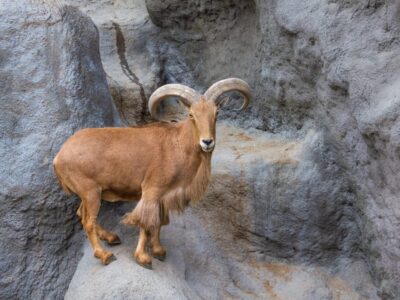
Aoudad Sheep
More aoudad sheep live in the United States than in their original North African habitat.
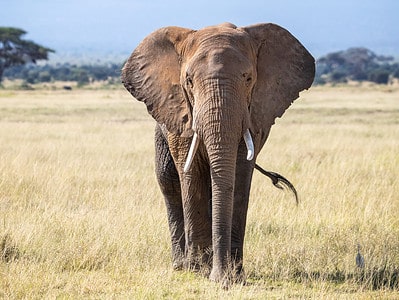
African Elephant
Both male and female African elephants have tusks. In Asian elephants, only the males have tusks.
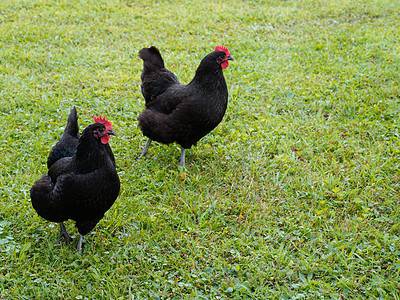
Australorp Chicken
Australorp chickens are among the best egg producers in the world, Hens in Australia set consecutive world records with one laying 364 eggs in a single year!

Animal by Letter Lists
- Animals that Start with A
- Animals that Start with B
- Animals that Start with C
- Animals that Start with D
- Animals that Start with E
- Animals that Start with F
- Animals that Start with G
- Animals that Start with H
- Animals that Start with I
- Animals that Start with J
- Animals that Start with K
- Animals that Start with L
- Animals that Start with M
- Animals that Start with N
- Animals that Start with O
- Animals that Start with P
- Animals that Start with Q
- Animals that Start with R
- Animals that Start with S
- Animals that Start with T
- Animals that Start with U
- Animals that Start with V
- Animals that Start with W
- Animals that Start with X
- Animals that Start with Y
- Animals that Start with Z
Up Next…
Take a closer look at a few animals from this list. Learn the differences between some commonly mixed up species and discover what makes Australian Cattle Dogs so special.
- Aardvark vs. Armadillo: What Are The Differences? – Who has the more varied diet and who is an early riser? Learn to spot the differences between these two mammals.
- 10 Incredible Australian Cattle Dog Facts – Did you know that these lovable work dogs are born white, which indicates their Dalmation ancestry? Learn more about this and other fascinating heeler trivia.
- Antelopes vs Gazelles: What Are The Differences? – These two hoofed mammals have a lot in common. But here you can discover the ways to distinguish them by examining their speed, size, anatomy, and more.
Thank you for reading! Have some feedback for us? Contact the AZ Animals editorial team.





